Review of the Terramaster F4-423 NAS Drive
The Network Attached Storage industry (NAS) unlike many areas of the tech world is actually surprisingly small in terms of the companies that fight for market dominance. With less than 10 big players and less than 5 of those being real marketing recognized, choosing a NAS solution is actually quite restricted. In that small paddock of NAS brands, the one that is by FAR the best hardware value (as in, getting the most for your money in terms of hardware) is Terramaster. A brand that has evolved incredibly rapidly in the personal home/office server market in the last 7-8 years. Although not as well established as bigger brands with decades in the server industry (such as Synology and QNAP), in the short time they have been in the NAS market, they have produced a range of solutions that sneak up remarkably close in hardware/software to those bigger brands, whilst sometimes arriving close to half the price for the same architecture. Their latest series is the x23 series (arriving in 2, 4, 9 and 12-Bay desktop solutions so far, at the time of writing) and today I want to review their F4-423 4-Bay NAS. Going up against the likes of the Asustor Lockerstor 4 Gen 2 and QNAP TS-464 NAS (released around a month on either side of the F4-423), as well as competing with Synology’s DS920+ right now, the F4-423 has some steep competition. Nevertheless, with its pricetag already £100-180 less (depending on where you shop) the F4-423 already seemingly has the high ground in terms of affordability, but what about software, quality and overall performance? Let’s review this new Terramaster NAS and see if it deserves your data.
Terramaster F4-423 NAS Review – Quick Conclusion
Terramaster still continues to be the most affordable fully-featured provider of the whole NAS market and although a number of their solutions have always felt a little rough around the edges, you always got the impression that you were getting a good deal for the hardware that was available from QNAP and Synology. Now in 2022/2023, the same continues to be true but in the F4-423 NAS’ case, you are actually getting some pretty top tier (for the Home/Prosumer) market at a price tag that is really tough to argue with. Terramaster has clearly been watching their bigger competitors and cherry-picked the features that people have been asking for (2.5GbE, USB 3.2 Gen 2, M.2 NVMe SSD bays, etc) for this new generation. In terms of software, things are a little less convincing and although TOS 5 (currently in Beta at the time of writing) still continues to evolve into something genuinely fully featured and impressive, TOS 4 that the F4-423 includes at launch is usable (if unexciting) platform that provides the base level services that a new NAS user would want, but lacks killer apps that their competitors are offering right now (File Streaming, AI photo recognition, Surveillance, etc). Most of these ARE included in TOS5, but until it arrives much later in 2022 in a full release, the F4-423 feels like a powerful NAS that doesn’t have the software to show off its strengths yet. If you are reading this later in 2022 or 2023, this might well be irrelevant though, as the brand rolls out their bit firmware update to ALL Terramster NAS devices. Overall, I definitely CAN recommend the F4-423 NAS for its hardware, for Plex Media server or as an affordable multi-tier backup solution, but if you are looking for a NAS for more tailored data access or in a much more fully-featured package – hold out a little longer till TOS 5 gets released first.
| Where to Buy a Product | |||
|
|
    
|

|
VISIT RETAILER ➤ |
 |
    
|

|
VISIT RETAILER ➤ |
 |
    
|

|
VISIT RETAILER ➤ |
 |
    
|

|
VISIT RETAILER ➤ |
Terramaster F4-423 NAS Review – Unboxing, Packaging & Presentation
The initial impressions of the presentation Terramaster F4-423 NAS were a little meh! As this is a more affordable solution, it is understandable that some areas of the retail package are going to be a little understated. Additionally, NAS systems like the F4-423 NAS are going to 99% of the time be purchased online (not in your local I.T shop or generally in line of sight at the point of sale), so the need for flashy packaging is less important. That said, many brands still put a little effort into this and present their solutions as a means to promote a brand, lifestyle or general vibe or excellence in their product (i.e. “the first bite is with the eye” etc). The Terramaster F4-423 arrives in a very plain brown box and just has the model ID with a sticker and the brand logos.
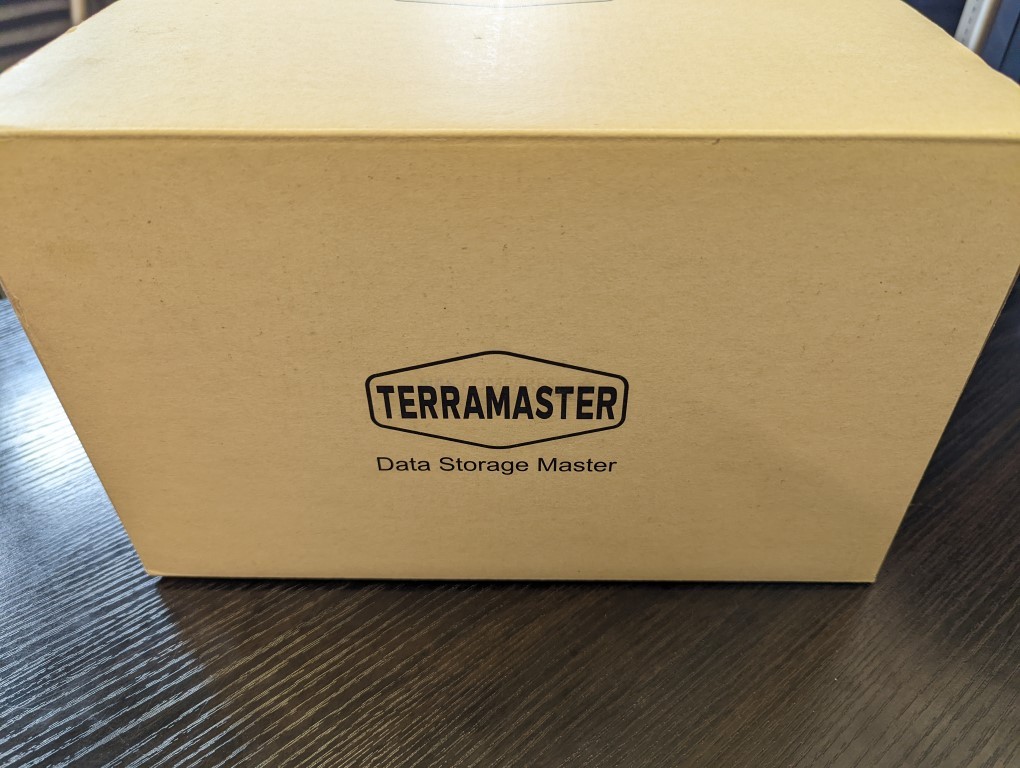
Remarks of presentation aside, the packaging of the Terramaster F4-423 is pretty good in terms of protection. The unit is well held in foam (a little softer in density than I would like maybe) and the accessories are neatly and securely contained. There is practically no room for the system to move in transit and ultimately, that is all that matters (silent shock/motion damage to the components).
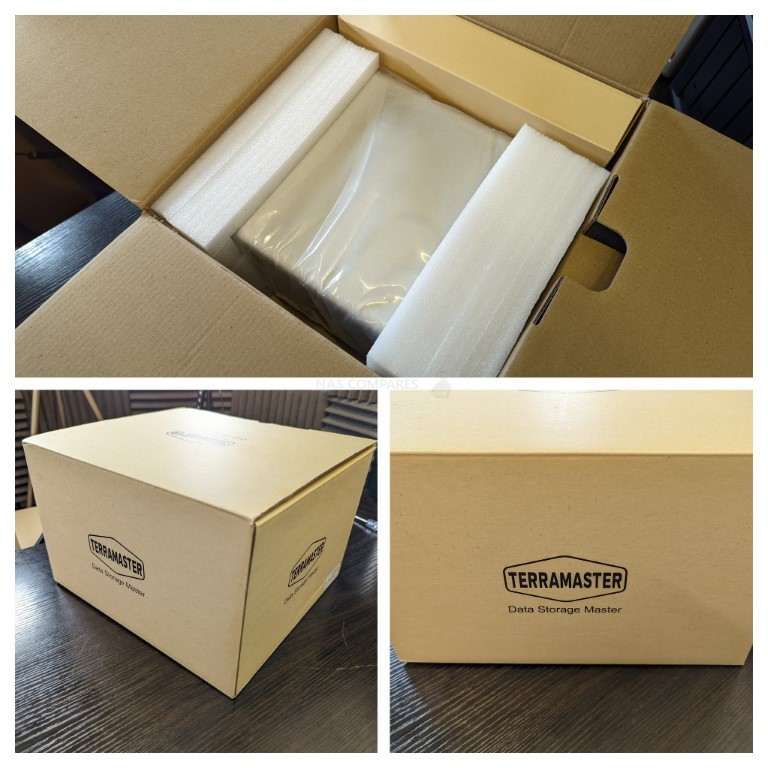
The accessories box contains lots of accessories and although most are pretty standard (setup instructions, power supplier, warranty information, screws, etc), there are a couple of unusual additional that I have never received in other brand’s products, namely the inclusion of additional HDD tray clip/screw washers and additional rubber feet for the NAS. This isn’t really a good/bad thing and for those that need them, it’s a handy addition. Just seemed an unusual addition.
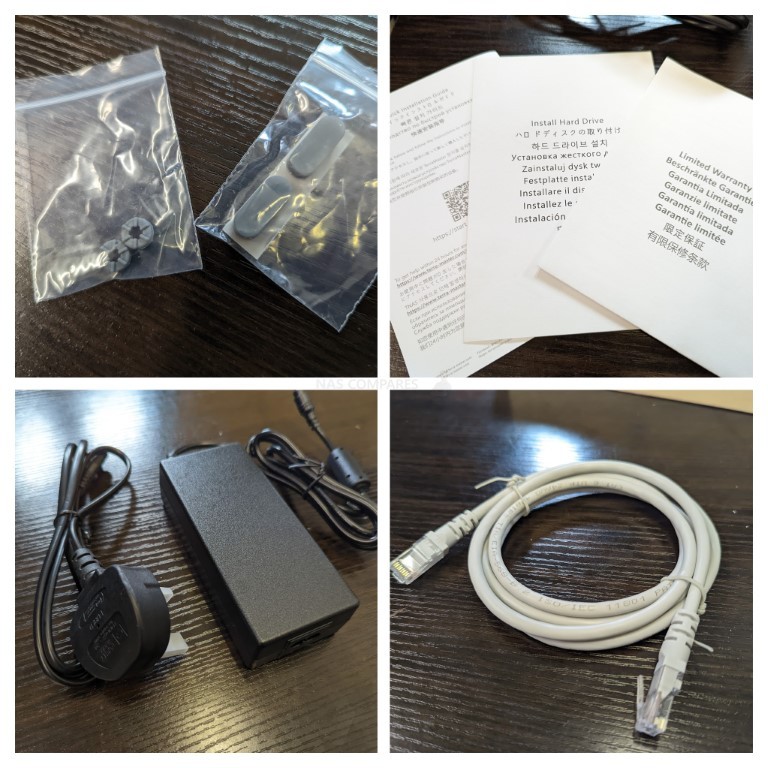
One small but positive area of note is the LAN cable included. As mentioned earlier, in more affordable NAS solutions (like more tech), the way savings can be made is by cutting corners. Therefore I was surprised that the Terramaster F4-423 arrived with a surprisingly high-quality LAN cable. Thick, Cat 6 and very high quality at the connector. Again, this si a small point, but companies such as QNAP and Terramaster HAVE provided Cat 5e cables of a shorter length, thinner material and nowhere near the quality of this one with their 1/2.5GbE solutions. It’s a VERY minor point, but this is the sort of area I would have assumed Terramster would have saved a few £/$ on and I am impressed.
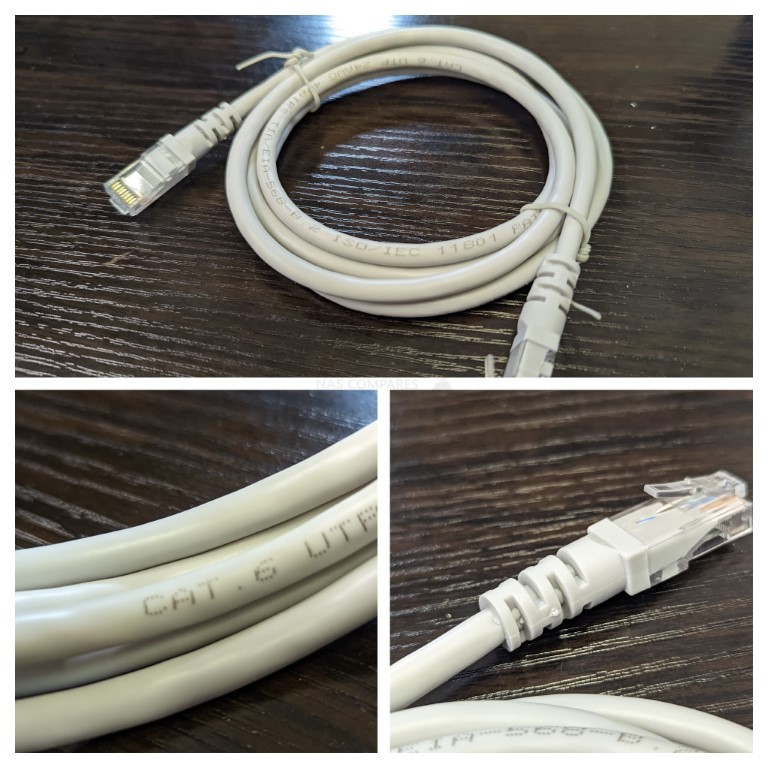
The Terramaster F4-423 arrives with an external PSU (quite standard in 4-bay desktop systems) and it’s quite non-descript and not too much to write home about. It’s a 2-pin connector 90W PSU.
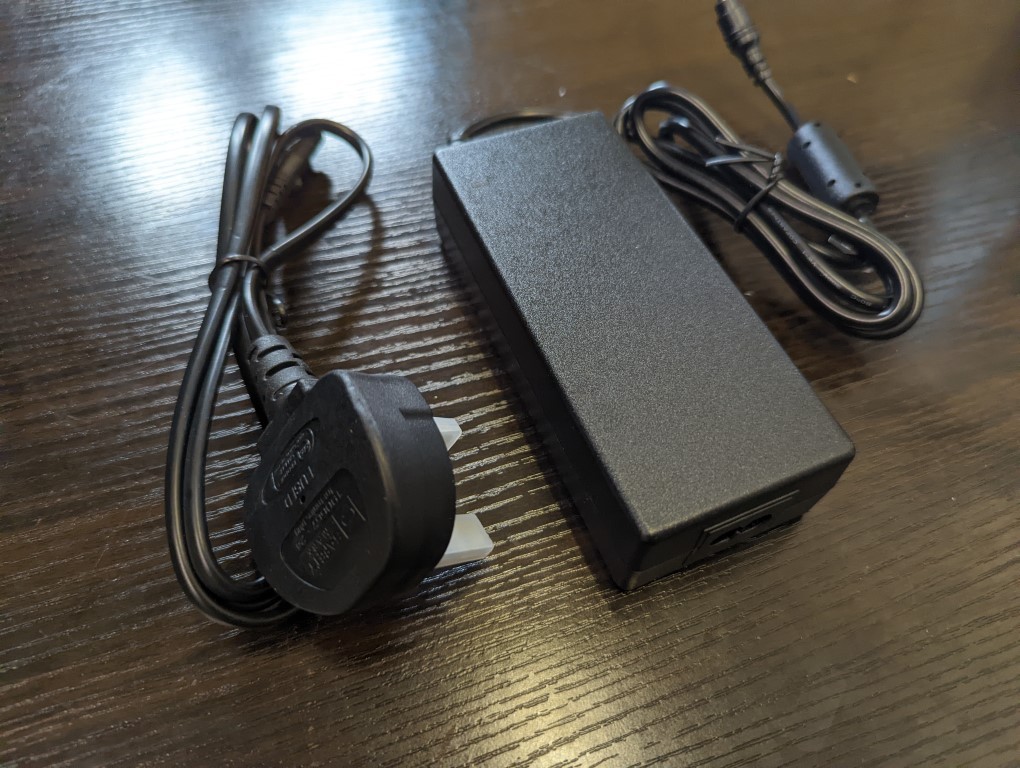
Overall, there is quite a good range of accessories included with the Terramaster F4-423. Nothing spectacular, but pretty much everything you are going to need (aside from storage media) to set up your NAS quickly and easily. Let’s discuss the design of the F4-423.
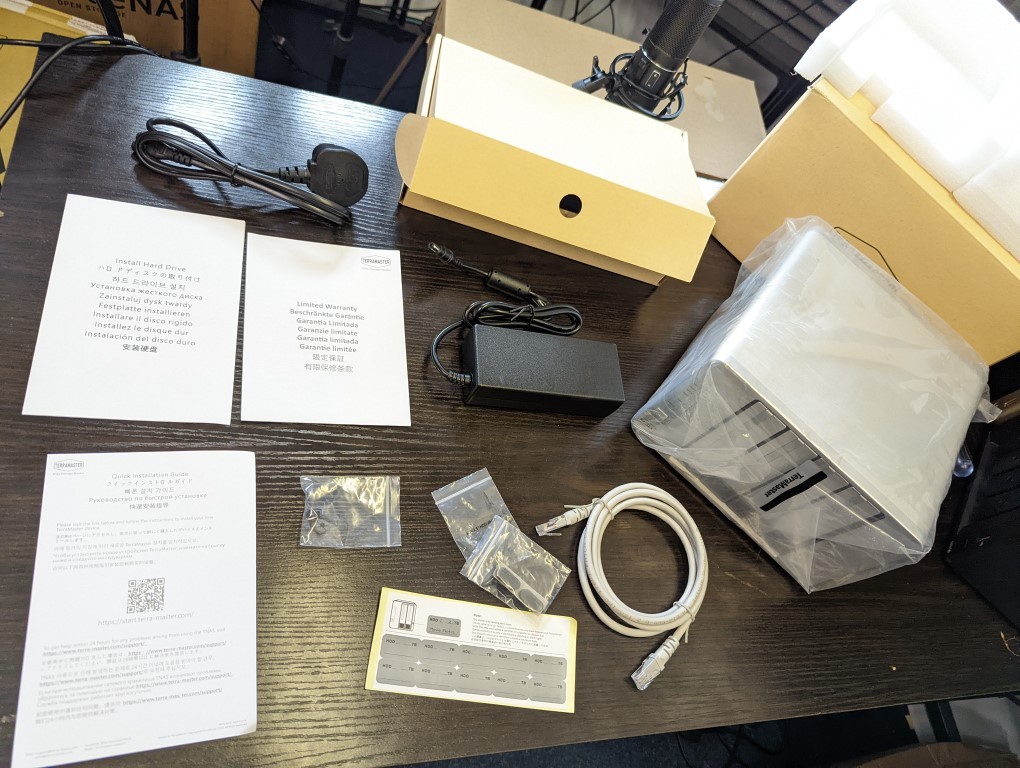
Terramaster F4-423 NAS Review – Design
Terrasmaster NAS drives are pretty distinctive. The brand has been using largely the same chassis in its 2 and 4 Bay systems for about 5 years. There HAVE been improvements (port placement, removal of the odd handle on the top and the tray quality is massively improved) but in the desktop 2/4-Bay systems, things have changed very little. The design is looking a little dated now in 2022, but it is still very functional and whereas brand like QNAP have 8-10 different design chassis in their portfolio, it is nice that Terramster have at least kept a consistent look/shape to the solutions in their portfolio for brand recognition.
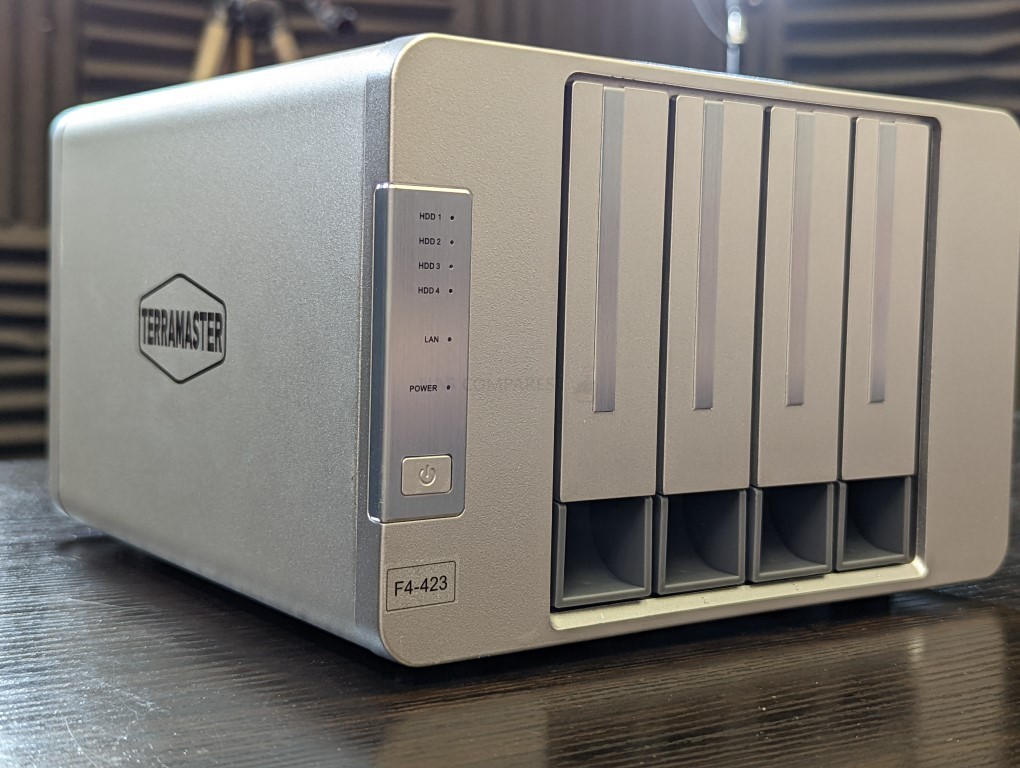
The Terramaster F4-423 NAS chassis is a combination of Metal and plastic (with the front, rear and media trays all arriving in plastic, but the 1 piece surrounding the middle area is metal). Indeed, at a glance you might assume the whole thing is metal, with the brushed silver colour scheme, but no. The system’s passive cooling (vents) are located between each of the media bays, and at the base of the machine. The system seemingly takes advantage of horizontal airflow through the chassis (with the rear fans facilitating this) and the metal middle section providing dissipation for the internal mechanisms getting warm.
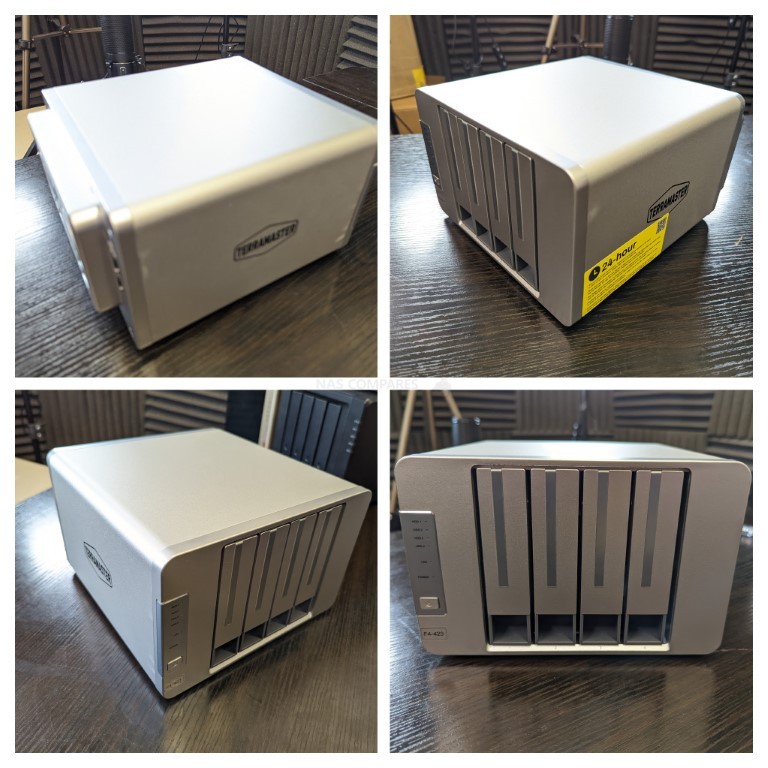
The ventilation on the base of the Terramaster F4-423 is pretty much the entire system and the rubber feet of this NAS are noticeably taller than other NAS 4-Bay systems. Although these are chiefly under the drive media bays, they are pretty much over the entire controller board too, to create an angled air circulation through the bays/board and via the fans on the rear.
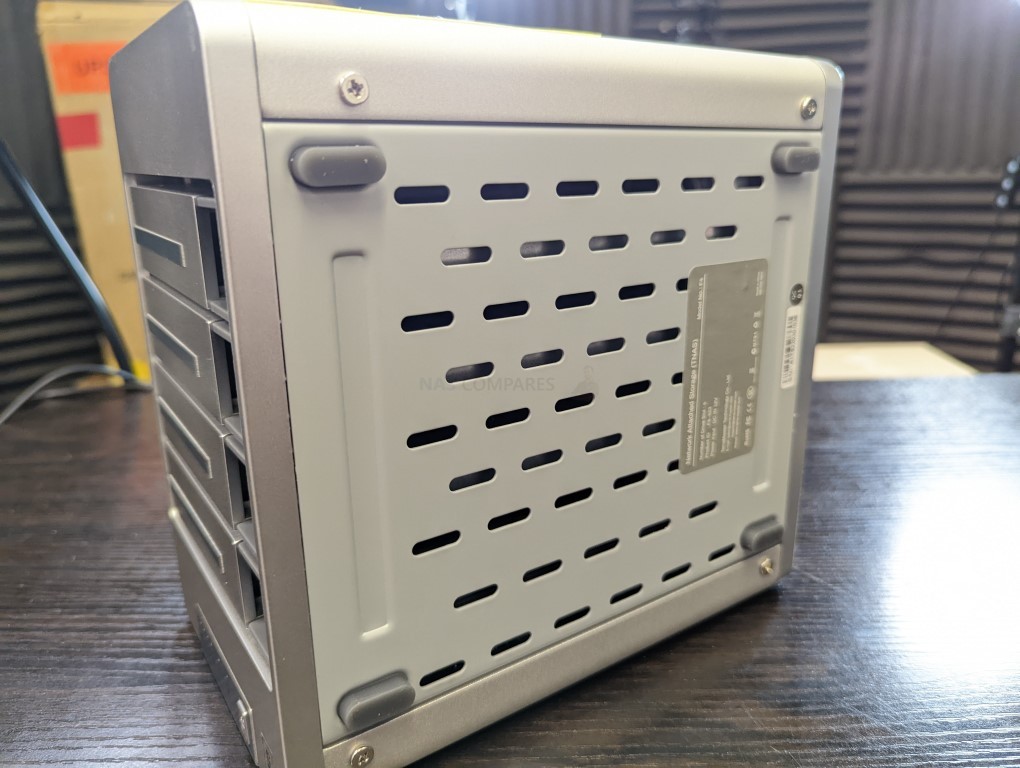
The Terramaster F4-423 chassis lacks any LCD panel (these days only QNAP and Asustor seemingly include these on a few of their systems) and system information is provided by multiple LEDs on the front. These cover the activity, status and health of the media bays, the network connection and the power of the system.
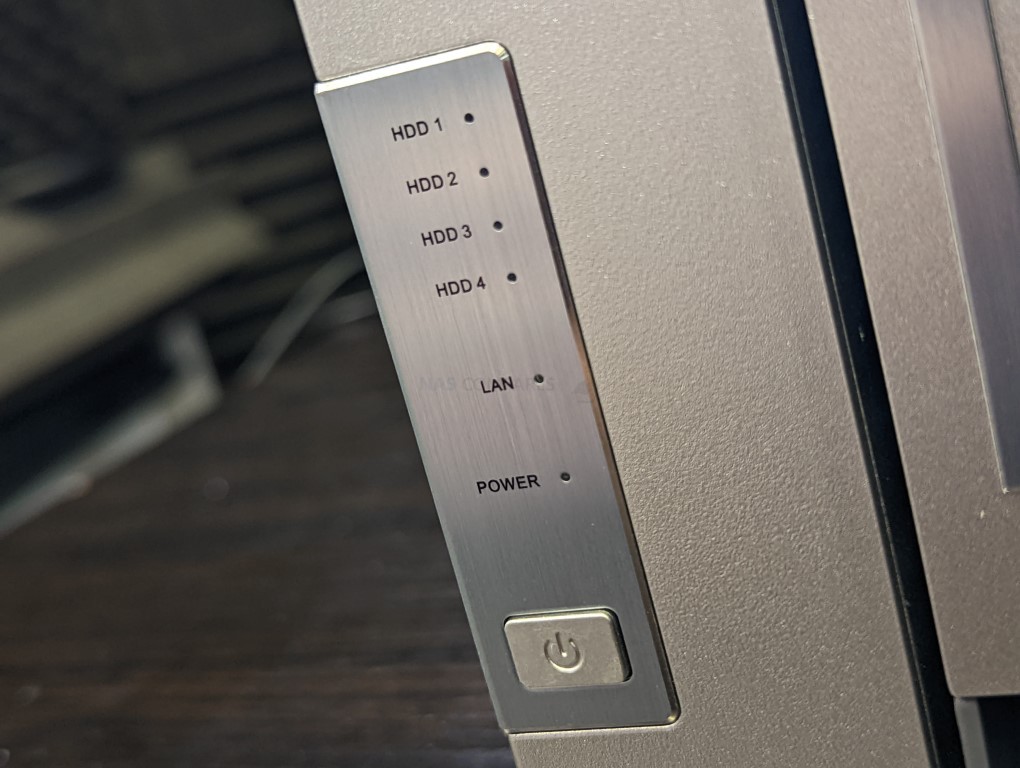
The main storage bays of the Terramaster F4-423 NAS are SATA connected plastic trays that support 2.5″ and 3.5″ media (i.e HDDs and SSDs). The system can operate with a single drive if you choose, allowing you to gradually add more storage over time. However, the Terramaster F4-423 (like most NAS) works at it’s best with multiple drives in a RAID configuration for the safety net of redundancy and/or a performance increase of multiple drives being read/written to at the same time.
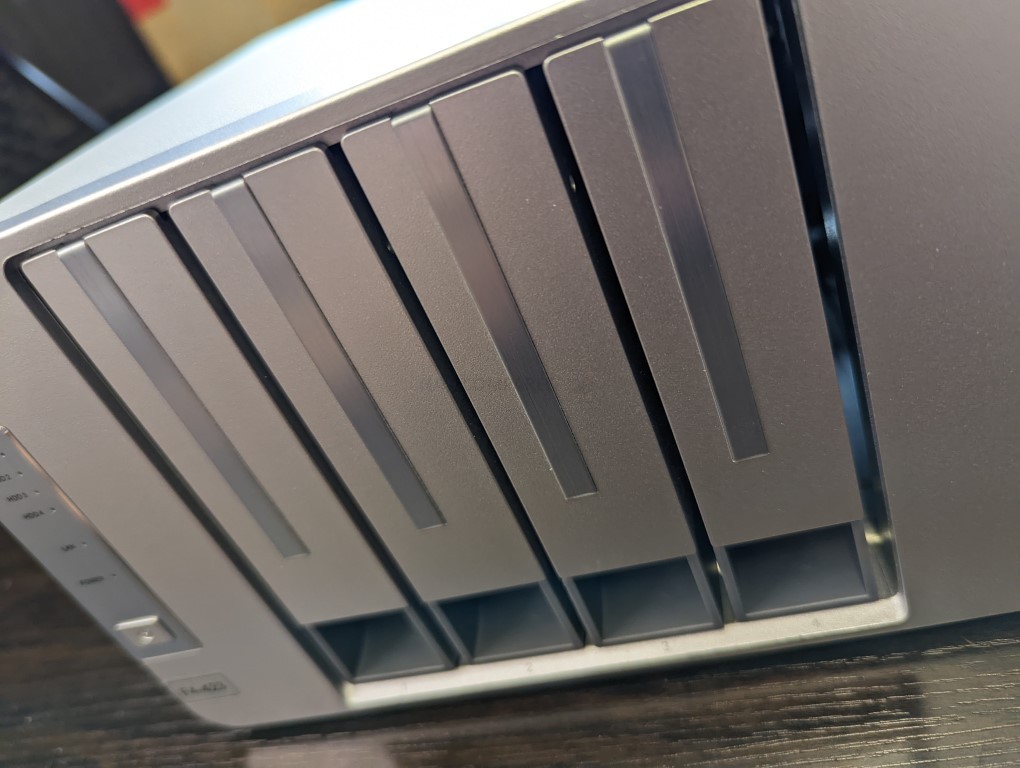
The trays inside the Terramaster F4-423 support the toolless installation of 3.5″ HDDs (i.e no screwdriver needed and drives click in securely) and 2.5″ SSD/HDDs need the included screws. The SATA connections inside are combined data/power, so no loose cables or tricksy installation. Lastly, the Terramaster F4-423supports hot swapping, so drives can be inserted/removed without powering down the system, just BE AWARE that removing a drive that is in a RAID is not recommended (by ANY NAS brand).
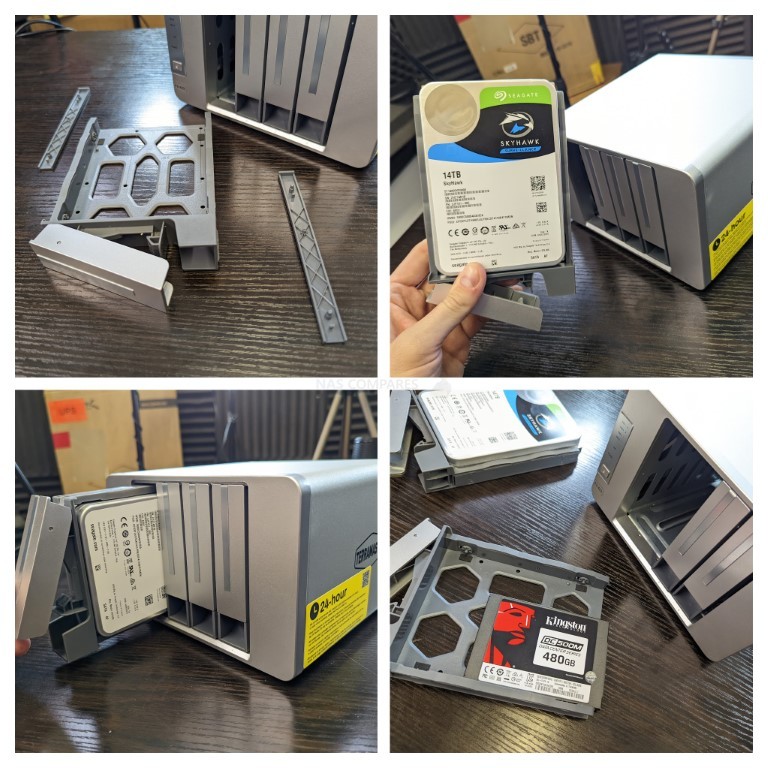
And that is about it for the design of the Terramaster F4-423 chassis. They have used this same design in the bulk of the desktop 2/4 systems, so there are few surprises here. But nonetheless, it seemingly does the job and aside from the design perhaps looking a little old these days compared with Synology’s more expensive Diskstation series, it’s a solid enough build. Let’s discuss the ports and connections of the F4-423 NAS.
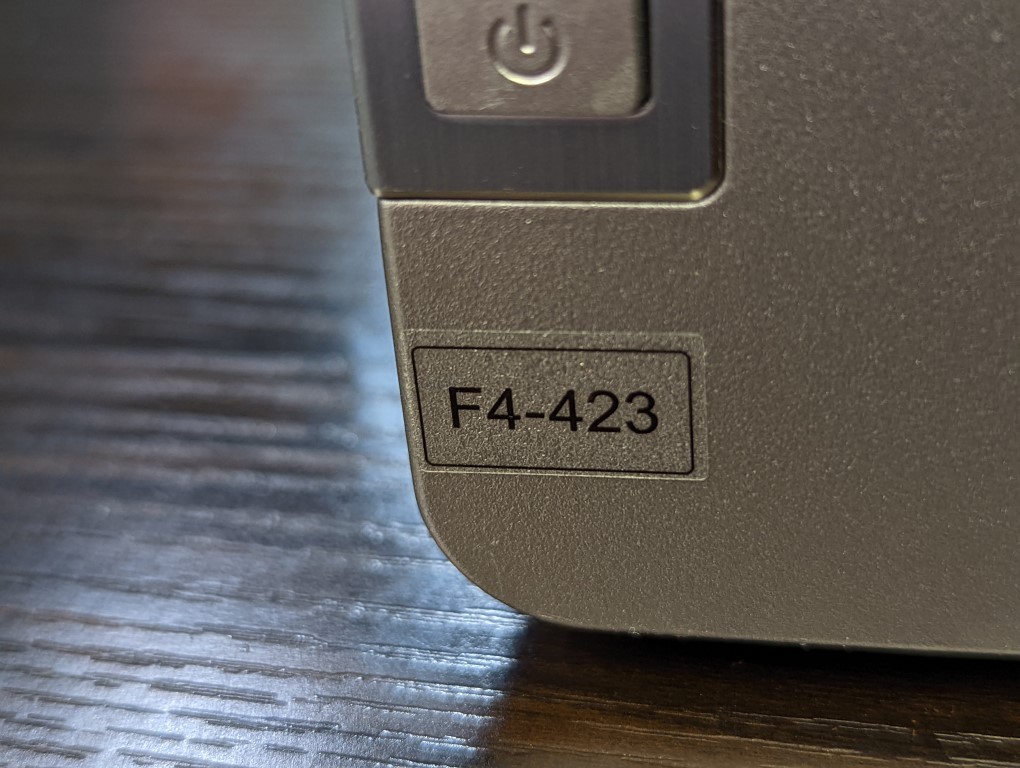
Terramaster F4-423 NAS Review – Ports and Connections
The connections available on the Terramaster F4-423 NAS, although few in number, are all pretty good for what the devices are costing right now. Only three connections to discuss (and one of them is a bit negligible) but given the device’s price point, the available external bandwidth here is impressive. The rear chunky fan module that is located on the rear of the F4-423 (much like previous Terramaster NAS systems) is a little unsightly, but as it is on the rear of the unit, you are never going to see it much.
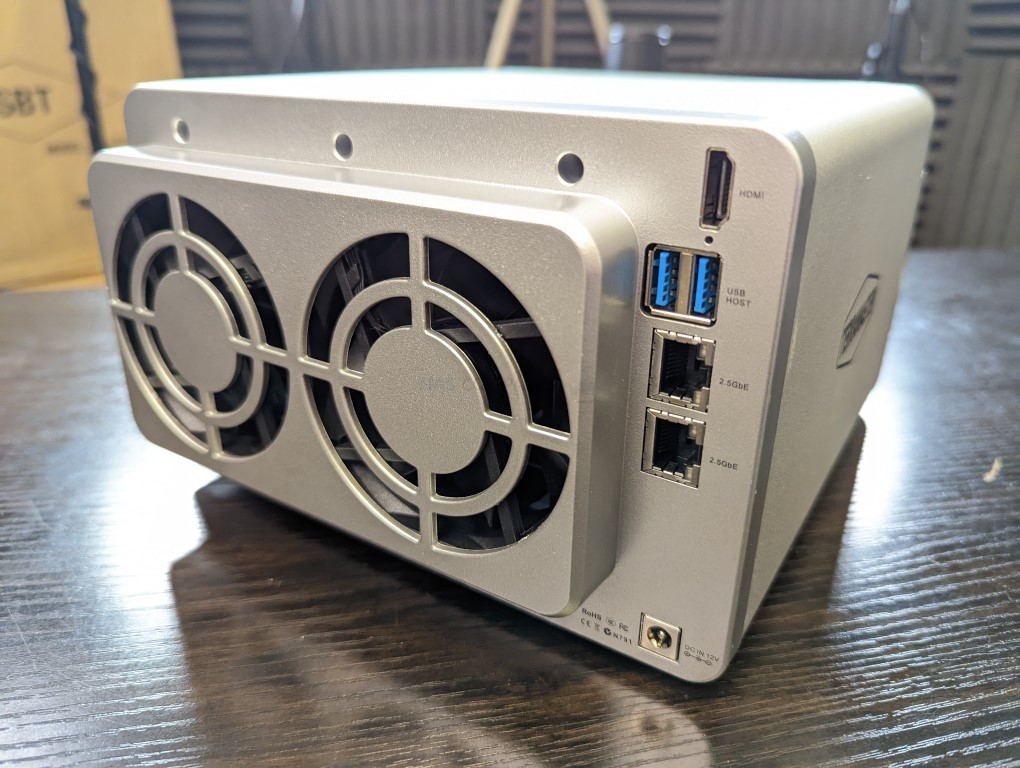
The twin fans are thicker than many other fans in the market and although that results in a greater draw of air into the system when it is operational, it does also mean that when in operation, the Terramaster F4-423 is a pinch louder. These fans can be adjusted in rotations per minute (RPM) in the TOS software of course, but it is not recommended and it’s best to leave the system fans on automatic so they can dynamically adjust to the internal temperature for efficiency.
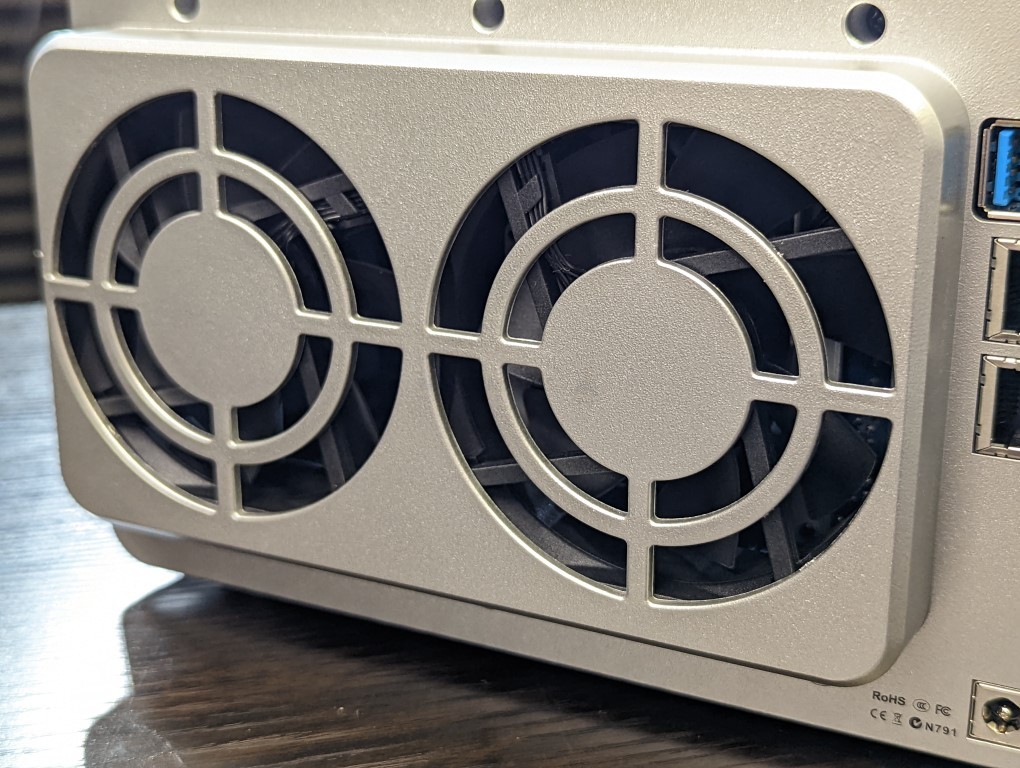
Of course, the first big improvement of the Terramaster F4-423 over its predecessors (F4-422 and F4-421) is the inclusion of 2.5-gigabit ethernet (2.5GbE). The NAS arrives with two ethernet ports that can provide around 250-279MB/s throughout each, as well as allowing link aggregation (aka Port Trunking) to combine their bandwidth and provide 5GbE (around 500-550MB/s throughput) with the use of a smart switch. In the last few years, we have seen several brands provide 2.5GbE connections at the same cost as 1GbE ports and with internet service providers and affordable switch manufacturers providing 2.5GbE solutions, it was only natural that NAS brands would make the jump towards it. Hypothetically, if you had a faster than Gb internet connection (fiber etc) and a google drive account, that means that you would be able to connect with your cloud drive FASTER than a NAS system in your home if you only have 1GbE. This is why NAS systems need to arrive with 2.5/5/10GbE in 2022, for the sake of futureproofing and to keep up with the growing demands for data access. Additionally, 4 SATA storage bays (as well as the use of those internal SSD bays that I will touch on later) will easily saturate a 2.5GbE and even LAG supported 5GbE connection, so these ports allow you to maximize your storage potential and share that bandwidth with multiple connected users.
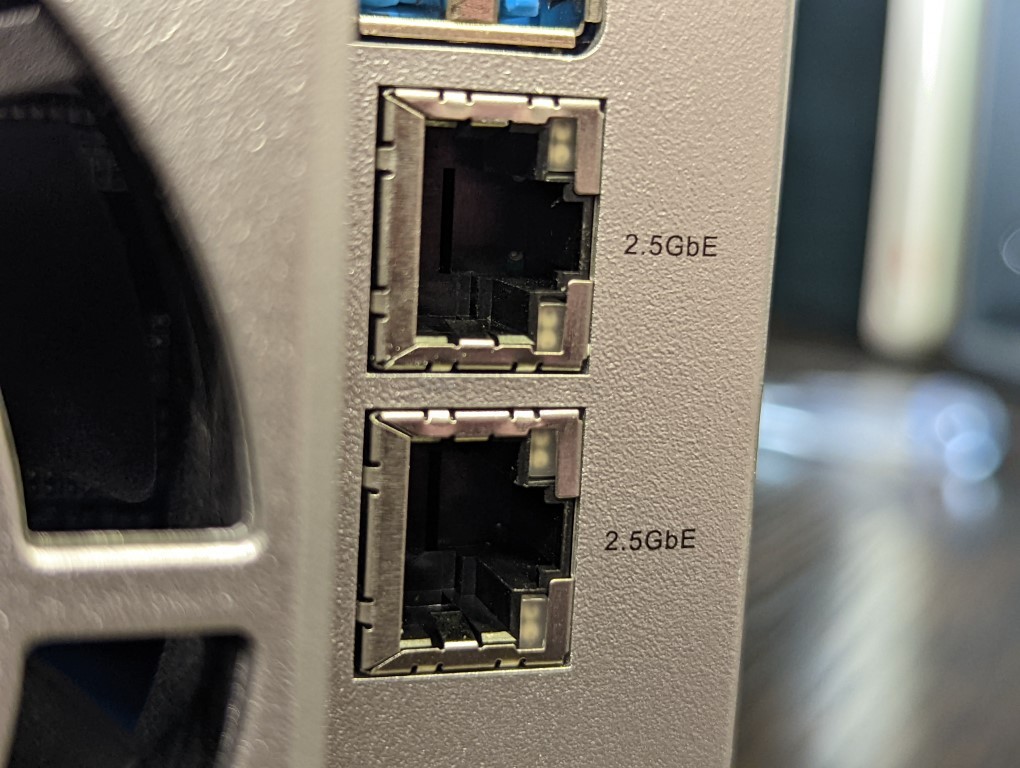
One slight letdown is that the Terramaster F4-423arrives with an HDMI port BUT they do not have any kind of HDMI/Visual GUI that can be accessed (unlike QNAP’s HD Station and Asustor’s Portal applications) The HDMI out DOES allow you to access SSH/Telnet level/stylized backend controls with a USB keyboard, but with this CPU and hardware architecture supporting embedded graphics, 4K media and multimedia services, it is a real shame that you cannot do anything more home/SMB friendly than command line. Maybe one-day Terramaster will update TOS to take advantage of this feature in a more graphical/KVM way, but it has been 2 years of these systems having HDMI and we have yet to see any change on this.
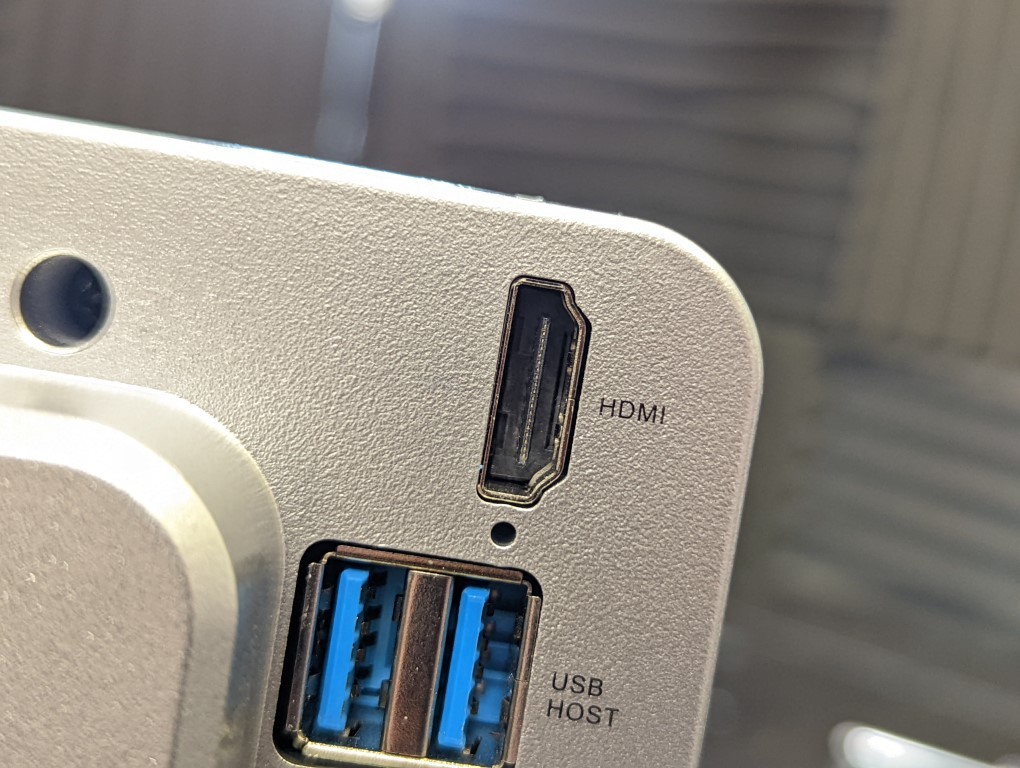
The USB ports of the Terramaster F4-423 are a subtle upgrade over previous/older NAS systems from the brand, with this NAS featuring 2x USB 3.2 Gen 2 Type-A ports. These allow connections of up to 10Gb/s (1,000MB/s – double that of the USB 3.2 Gen 1 5Gb/s in older systems) and that means much, MUCH faster local backups to external storage drives, as well as the support of USB JBOD storage expansions. The real benefits of USB 3.2 Gen 2 in expansions are only really felt when using larger SSD arrays or 5-8 bay expansions. Nevertheless, these ports are a nice extra for the system. Additionally, Terramaster recently released an affordable USB-to-2.5GbE adapter for £25+ that allows you to connect ANOTHER 2.5GbE port on this system. Add a 2-4Bay storage expansion to the other USB port and you have a great deal of storage and network bandwidth for this system to graduate towards, all thanks to those newer gen USB ports.
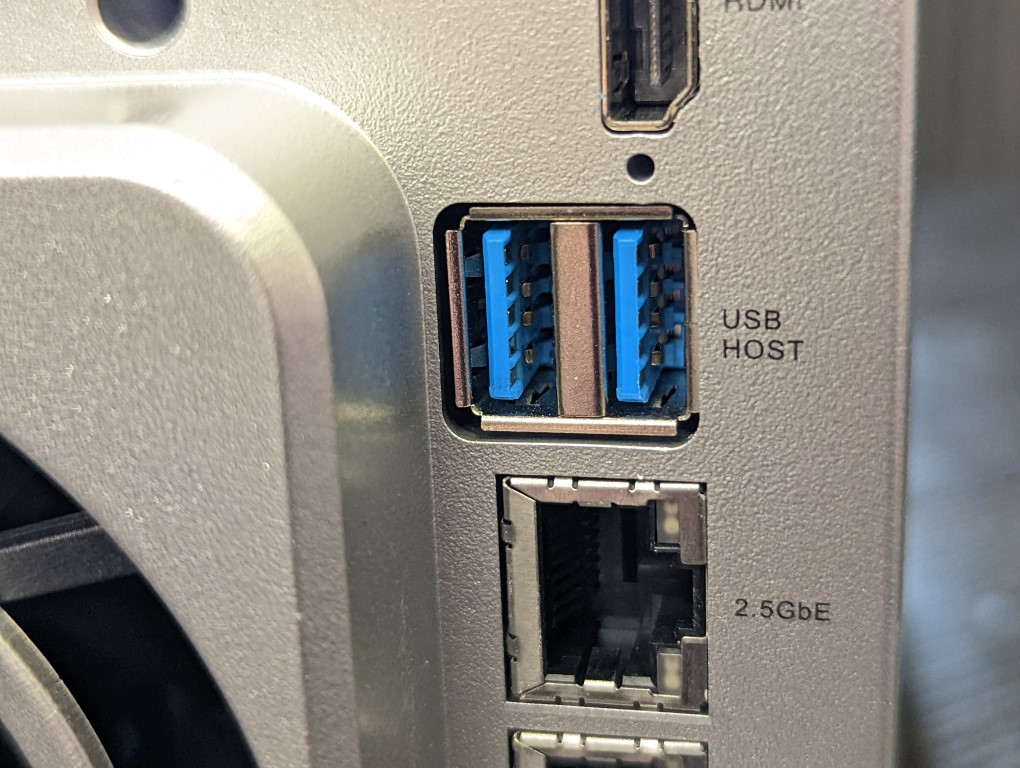
The ports and connections of the Terramaster F4-423 are few in number but still nonetheless good upgrades over it’s predecessor. Terramaster could have EASILY cut a few corners here (i.e USB 3.2 Gen 1 or just a single 2.5GbE port) and most users would not have batted an eye (as it is noticeably lower in price than the similar USB 3.2/2.5G QNAP TS-464). Let’s get our screwdriver and take a look inside this NAS to see how Terramster have approached the internal specifications of the F4-423.

Terramaster F4-423 NAS Review – Internal Hardware
The internal hardware of the Terramaster F4-423 NAS is a mix of current generation hardware choices and quirky application. The internal boards comprise two PCBs (one for the SATA storage nad another for… well… everything else). In most cases, a user will almost never completely dismantle a NAS drive in its lifespan. However, in the case of the F4-423, you are going to need to take it apart quite considerably in order to access a number of the upgrade options. In order to access these, you will need to remove the six rear screws of the chassis and then remove the rear panel. This rear panel contains the active cooling fans and either awkwardly hangs from the chassis or you will need to disconnect the fan (something only fractionally less ideal). From here you will need to slide the entire internal framework out and that allows you to access/upgrade a couple of the internal hardware components as needed.
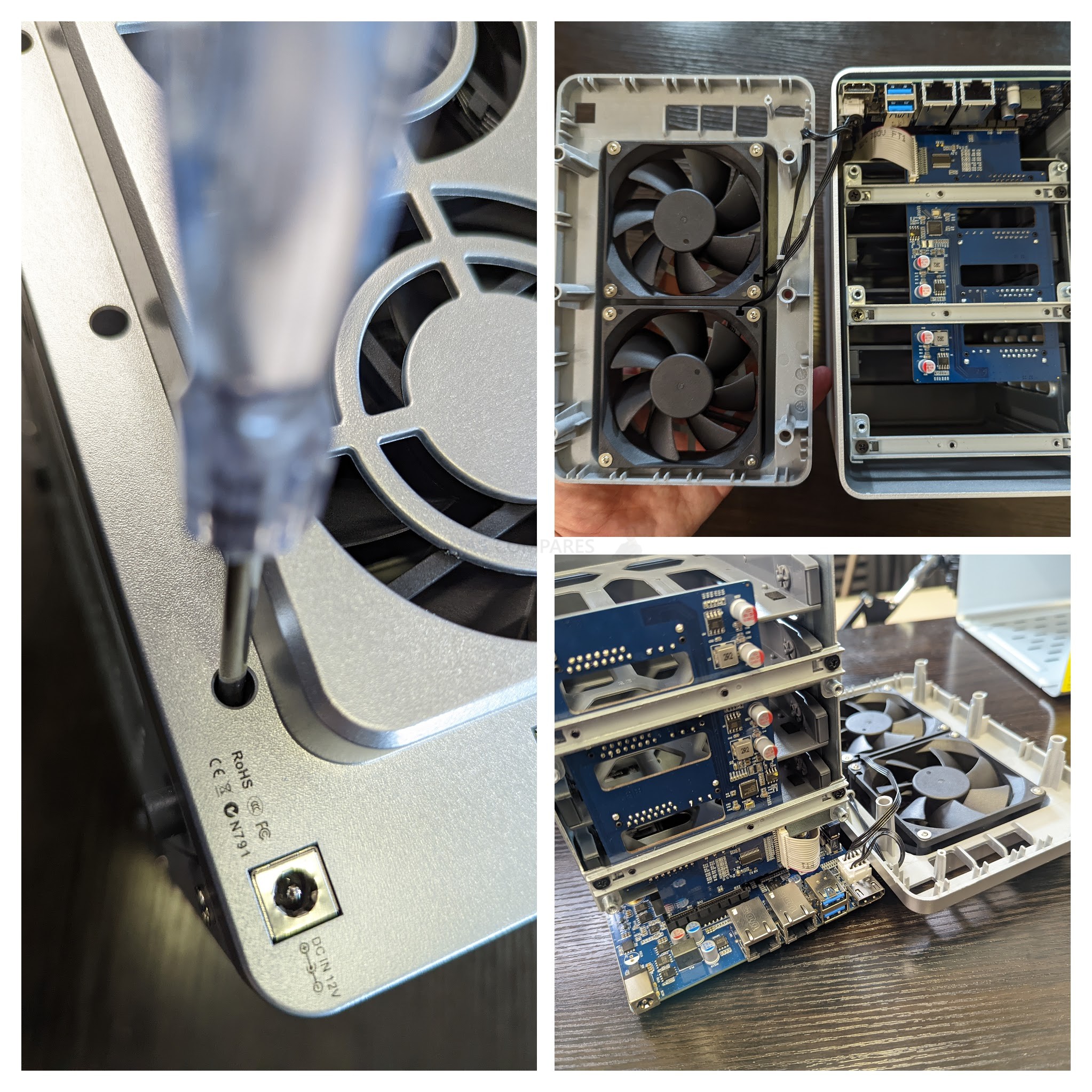
Once the full internal board is disconnected, you are able to see a wide variety of heatsinks, ports and modules. This is a slightly unconventional means of accessing these bits but something that most PC builders will be ok with. The board is double-sided with the m.2 SSD slots and a single SODIMM memory slot on one side, and the Internal CPU and another populated SODIMM slot on the other side – which is significantly harder to access and requires removal of even more of the internal framework to access.
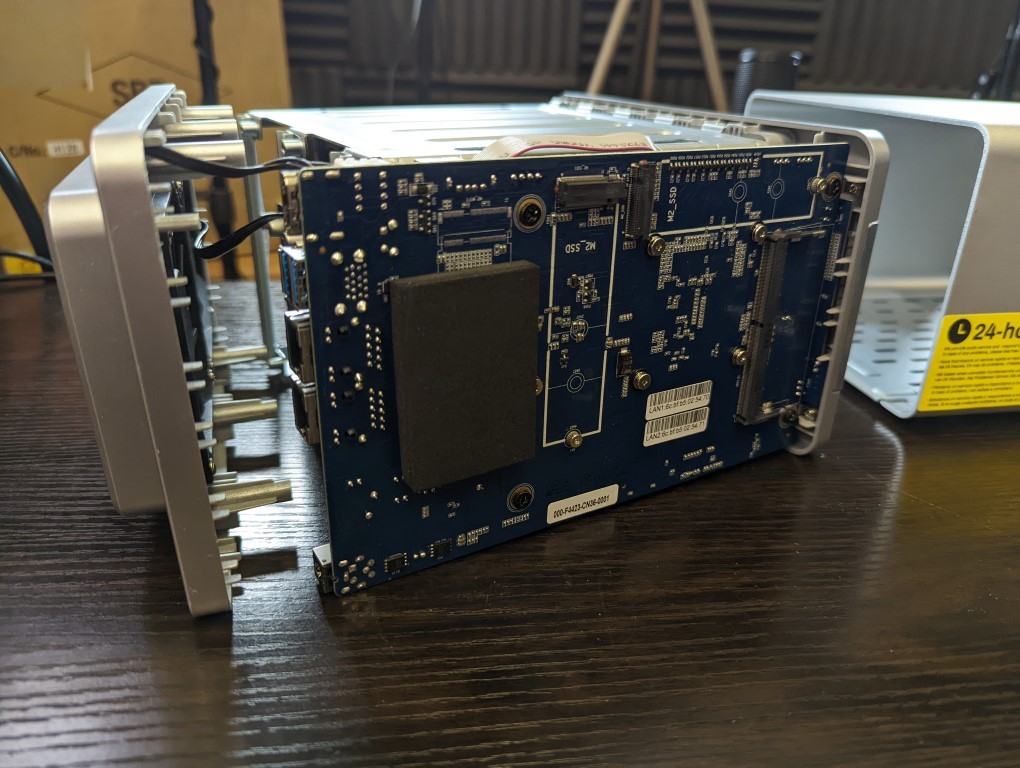
The CPU featured in the Terramaster F4-423 NAS is a quad-core Intel Celeron N5105 CPU, a processor that has been very much the ‘CPU of choice’ among the 2022/2023 generation of NAS hardware from most of the brands (except Synology). This is a quad-core x86 64bit processor that is 2.0Ghz in clock speed, that can be burst up to 2.9Ghz when needed. It features an onboard AES-NI encryption engine, as well as Intel embedded graphics for visual data tasks such as native multimedia playback, transcoding, photo management and improved services in TOS 5 (still in beta) towards AI photo recognition and surveillance with IP Cameras. As mentioned, although this is never going to challenge the likes of an Intel Pentium or Intel Core in 2022, it is still a very good CPU and in the context of NAS and this price point, very competent indeed.
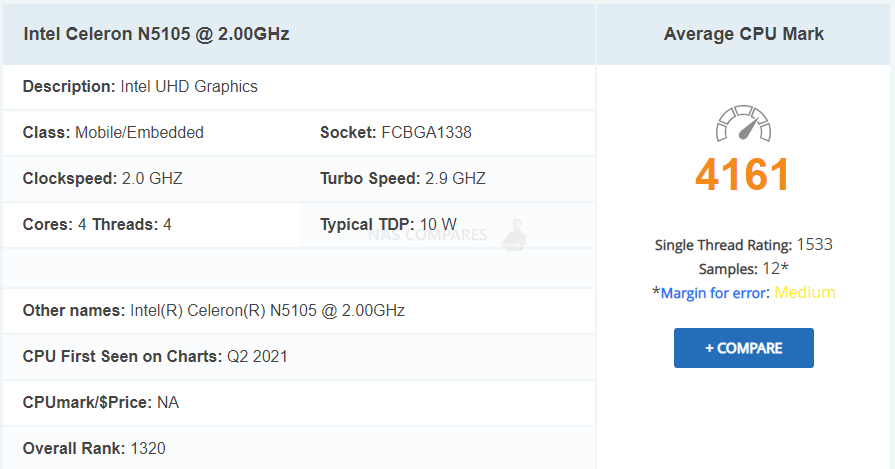
Alongside that CPU, the Terramaster F4-423 NAS also arrives with 4GB of DDR4 Memory. However, closer inspection of the F4-423 architecture does raise a couple of small questions. Firstly, the 4GB of memory the system arrives with is a single 2133Mhz SODIMM module. Most other NAS systems with this architecture arrive with 2400-2666Mhz memory. It’s a small point, but this is the first NAS I have seen with DDR4 memory at 2133Mhz. Additionally, the 4GB module is located in an incredibly difficult place under the main cage array, so installing larger/faster memory is not going to be possible without much more dismantling. Talking of ‘adding more memory’, Terramaster state that the F4-423 NAS supports up to 32GB of DDR4 SODIMM memory across its two slots. However, Intel state that this CPU only supports a maximum 16GB across two channels – so although I am sure the system would definitely see 32GB of memory if you have 2x 16GB installed, I do wonder if you will definitely be able to actually USE all 32 correctly.
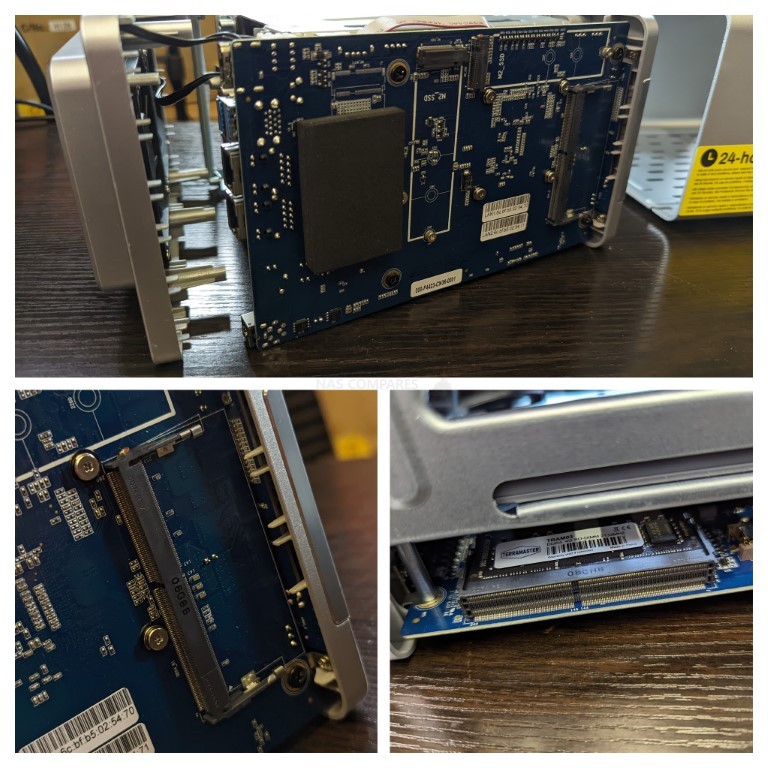
The Terramaster F4-423 also features two M.2 NVMe SSD bays that allow you to install significantly faster SSDs into the system alongside SATA HDDs, meaning that you have another option for your storage. Now, there is good and bad news here regarding these ports. On the plus side, they can be used for either caching alongside the larger HDD RAID configuration (to allow read/write caching and significantly improve their performance in key areas) or as it’s own storage pool. This is something that popular NAS competitor Synology has never implemented to their NVMe bays, despite it being a highly requested feature. On a slight downside, as the Intel N5105 CPU inside the Terramaster F4-423 is already being stretched a little thing in it’s architecture, these M.2 NVMe SSD bays are PCIe Gen 3 x1 speed. This means that NVMe SSDs such as the Seagate Ironwolf 510/525 or WD Red SN700 at PCIe Gen 3/4 x4 will be limited down to a maximum 1,000MB/s per bay. This is still something you can incorporate into a solid RAID for improved performance and its better to have them, than not at all though.
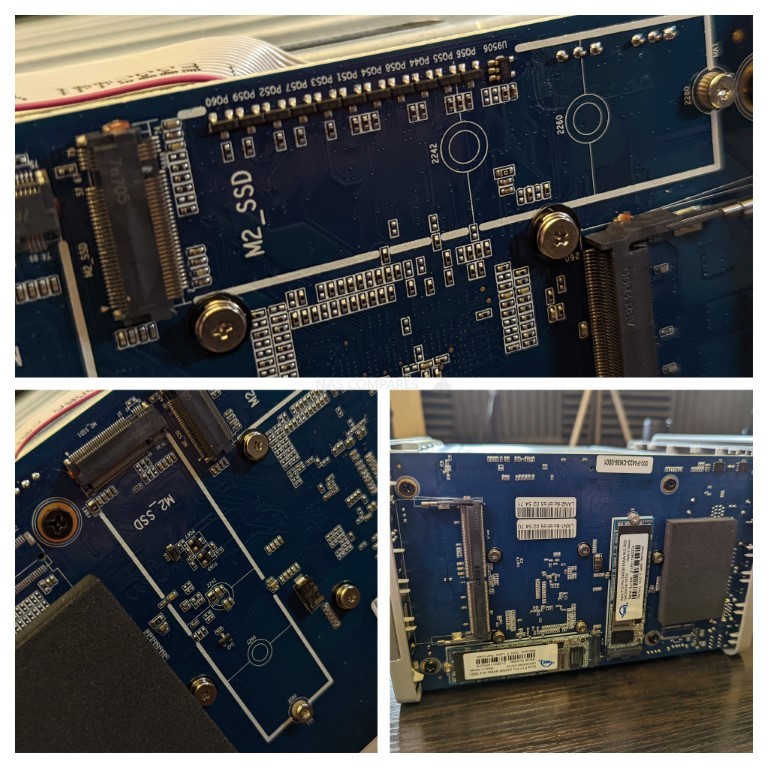
The internal hardware inside the Terramaster F4-423 is still good for the money and certainly gives you a solid base level of hardware to work with. The means to access and upgrade the system hardware is less smooth than most/all other commercial NAS brands, but once you have jumped these odd hurdles, you have some great kit here to use in conjunction with 1st and 3rd party applications. So, let’s move into the subject of software and TOS on the F4-423.
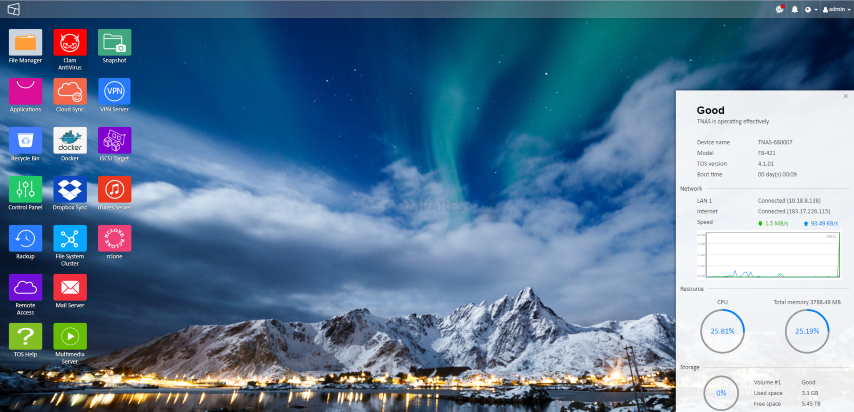
Terramaster F4-423 NAS Review – Software
VERY IMPORTANT – At the time of writing this review, the Terramaster F4-423 NAS arrives with the 4th generation of their software platform TOS. Why is this important? Well, because right now there is a beta in progress for TOS 5 and it is a SIGNIFICANT step from the current generation of TOS that is included with the F4-422 at launch. So, if you are considering the F4-422 NAS later in 2022/2023, then there is every chance that TOS 5 has been released and you can download it (free etc) onto the device. We will be reviewing TOS 5 fully when the final version is released, but for now, I wanted to highlight a number of hte key features that will be added to TOS later this year, as well as the current range of services that are included in TOS 4 right now. (important, we originally previewed a VERY earlier build of Terramaster TOS 5 Alpha in the video HERE on the NASCompares YouTube channel which will give you an idea of how TOS5 looks/feels, but many new features have been added in the months since the beta was rolled out). LOADS more features have been added since this original alpha preview and we will soon be deep-diving into this newer Beta release very soon. Below is what Terramaster say is included in the new TOS ver.5 Beta.
New Features & Improvements in Existing Services
In TOS 5, not only have the storage structure and data interaction mode been reconstructed but also, compared with the previous generation, it adds more than 50 features and 600 improvements. The new features meet more business requirements, as well as significantly improve response speed, security, and ease of use.
Browser Access to TOS is Now 3x Times Faster
TOS 5 adopts progressive JavaScript language and a lightweight framework with a faster loading speed. TOS 5 features bidirectional data binding, easier data manipulation, and automatic synchronous response to data changes in the page; UI, data, and structure separation make it easier to change data without the need to modify logic codes. Using progressive JavaScript language, TOS 5 has a more lightweight framework. In addition, through two-way binding of data, the view, data and structure are separated. When the page is operated, it automatically responds to changes in data, which makes the system “lighter” and achieves a faster loading speed.
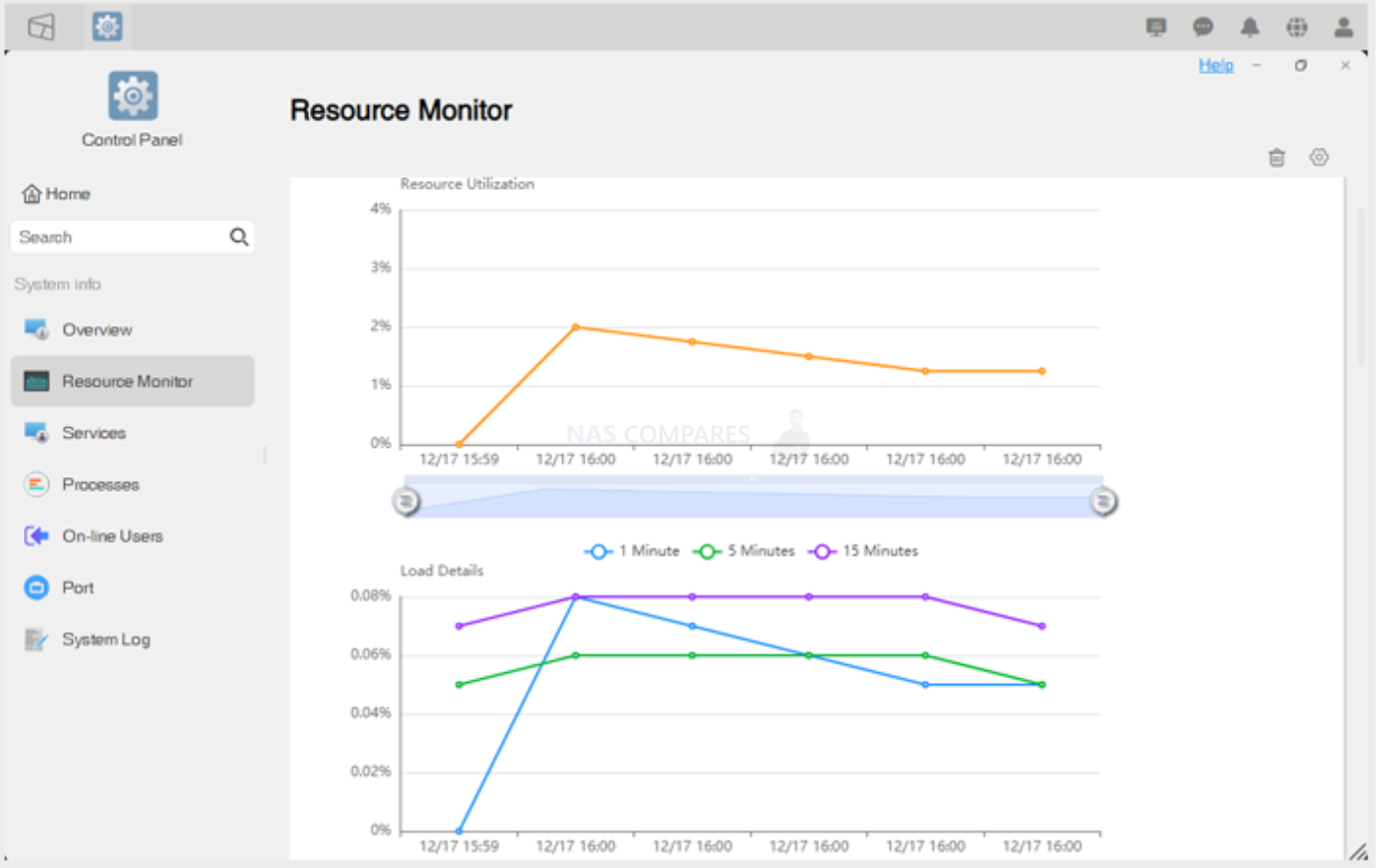
New caching technology avoids network round trips between the server and the database, bypasses the calculation that occupies resources, saves server resources, and improves response time and waiting time, so TOS 5 has the fastest response time in the current TOS family. Compared with the last generation, the TOS 5 response speed has increased by 300%! Use WASM to optimize the calculation method and execute the back-end complex calculations on the front-end, thereby reducing the calculation pressure on the server. In addition, TOS 5 uses the most popular back-end language at the moment, which can support high concurrent requests. Compared with traditional interpreted languages, the compilation speed is faster.
Improved Resource Monitor in TOS 5
The new iconic resource monitor board allows you to grasp the operating status of your TNAS comprehensively and intuitively in real-time; at-a-glance visibility of system load, CPU and memory usage, network traffic, disk I/O, device temperature, storage, processes, online users, listening ports, and system resource occupancy. Historical records of up to 30 days can be easily traced back.
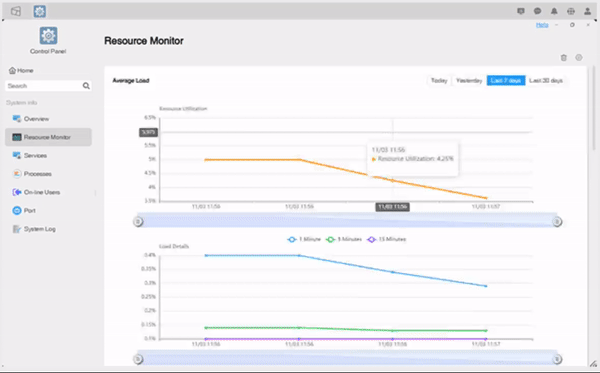
Full One Button System Isolation Mode Available in TOS 5
TerraMaster’s unique security isolation mode completely isolates your TNAS device from the external network through network isolation, digital signature, and file format restriction, providing a safer operating environment and effective protection against virus and ransomware attacks.
Support of the WORM File System in TOS5
Data can be written at one time within the customized protection period and cannot be deleted or modified. This effectively protects your data from malicious damage, deletion, or tampering and provides data protection for up to 70 years; essential for the financial, judicial, medical, and scientific research sectors, as well as other business users.
Improved Storage, Backup & Sync Features in Terramaster TOS 5
TOS 5 features optimized storage architecture to reduce the system space occupation. The file deduplication system, file system compression, TRAID elastic array, and other functions also save you up to 40% of storage space
Single Portal Folder Level Backup for Home and SMB Users
Reduce complexity and embrace simplicity. All backup needs can be completed through a single portal, providing one-stop backup solutions including Central Backup, TerraSync, Duple Backup, Snapshot, USB Copy, CloudSync, and other comprehensive backup tools. This meets your clients’ disaster recovery and restoration requirements, as well as backup policies and destinations.
Business Focused ProActive Backups for Larger Business
To improve management efficiency, medium and larger-sized businesses need a centralized and active backup solution for multiple users, PCs, and servers. Centralized Backup is a business-oriented backup solution that supports backup and restoration for multiple device types. You can centrally backup data of dozens or even hundreds of PCs, servers, or virtual machines with only one TNAS.
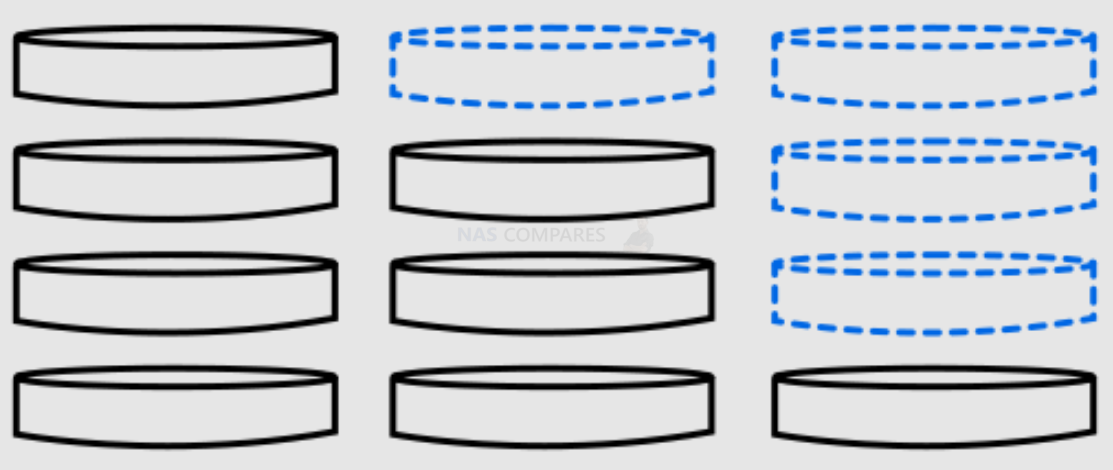
New Flexible RAID Support in TRAID in TOS 5
By optimizing the traditional RAID mode, TerraMaster RAID (TRAID) gives you flexible disk array configuration, flexible online migration, capacity expansion, and redundancy policies. As well as improving disk space utilization, it also provides solutions and security protection for storage space changes caused by new business requirements. Much like Synology Hybrid RAID (SHR) in that you can mix drive capacities for improved storage after the RAID redundancy calculation. I reached out to Terramaster directly on this and they confirm that this function is supported in TOS 5.
Multiple Client Sync with TerraSync in TOS 5
TerraSync, a TerraMaster self-developed synchronization tool, realizes data synchronization between multiple users and multiple devices. It efficiently implements data sharing among branch offices and data synchronization between individuals on multiple devices and platforms, which assists employees in collaborative work and improves work efficiency.
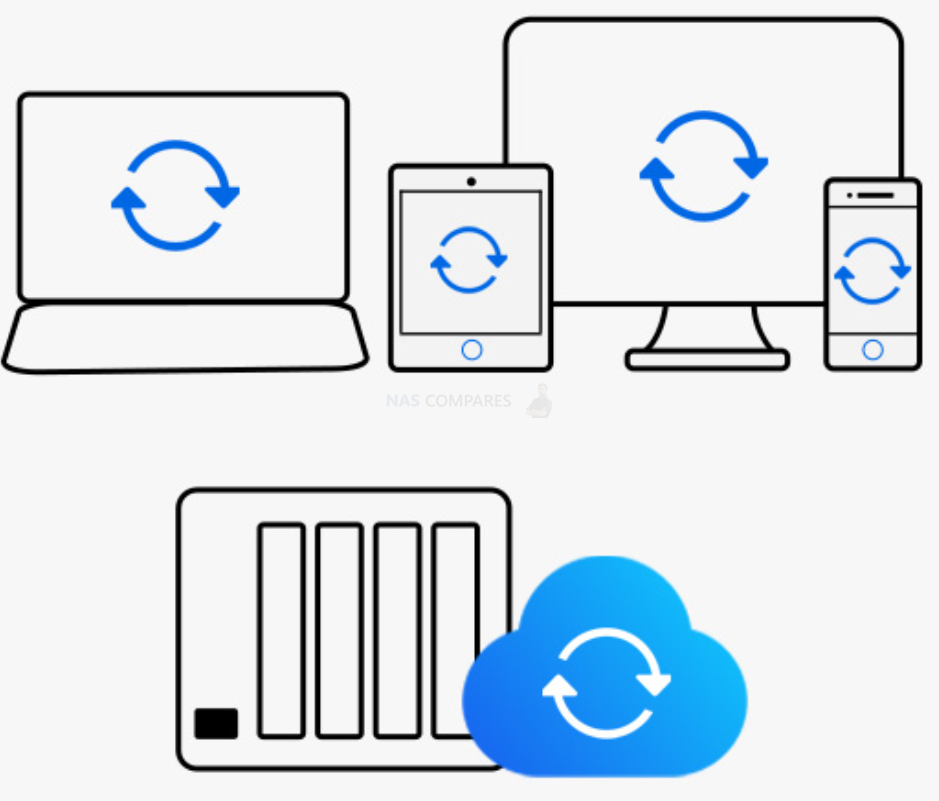
New CloudSync Application for Bare Metal-to-Cloud Live Sync in TOS 5
The new CloudSync app integrates multiple cloud drives and syncs them into one application, including Google Drive, One Drive, Amazon S3, Backblaze, Box, Dropbox, Koofr, OpenDrive, pCloud, Yandex disk, and Aliyun. This allows users to centralize the management of multiple synchronization tasks and add a variety of cloud disk synchronization options including Aliyun and Rackspace. A more flexible, stable, and efficient solution for data synchronization between your TNAS and cloud drives is facilitated by your choice of customized synchronization strategies, such as traffic control, scheduled tasks, and encryption.
CCTV Surveillance in Terramaster TOS 5
TNAS is an ideal video recording storage device. The new Surveillance Manager makes full use of TNAS storage resources to realize camera management, real-time monitoring, video storage, playback, query, event and activity monitoring and recording, providing you with economic and flexible video monitoring management tools to safeguard your personal and property safety.
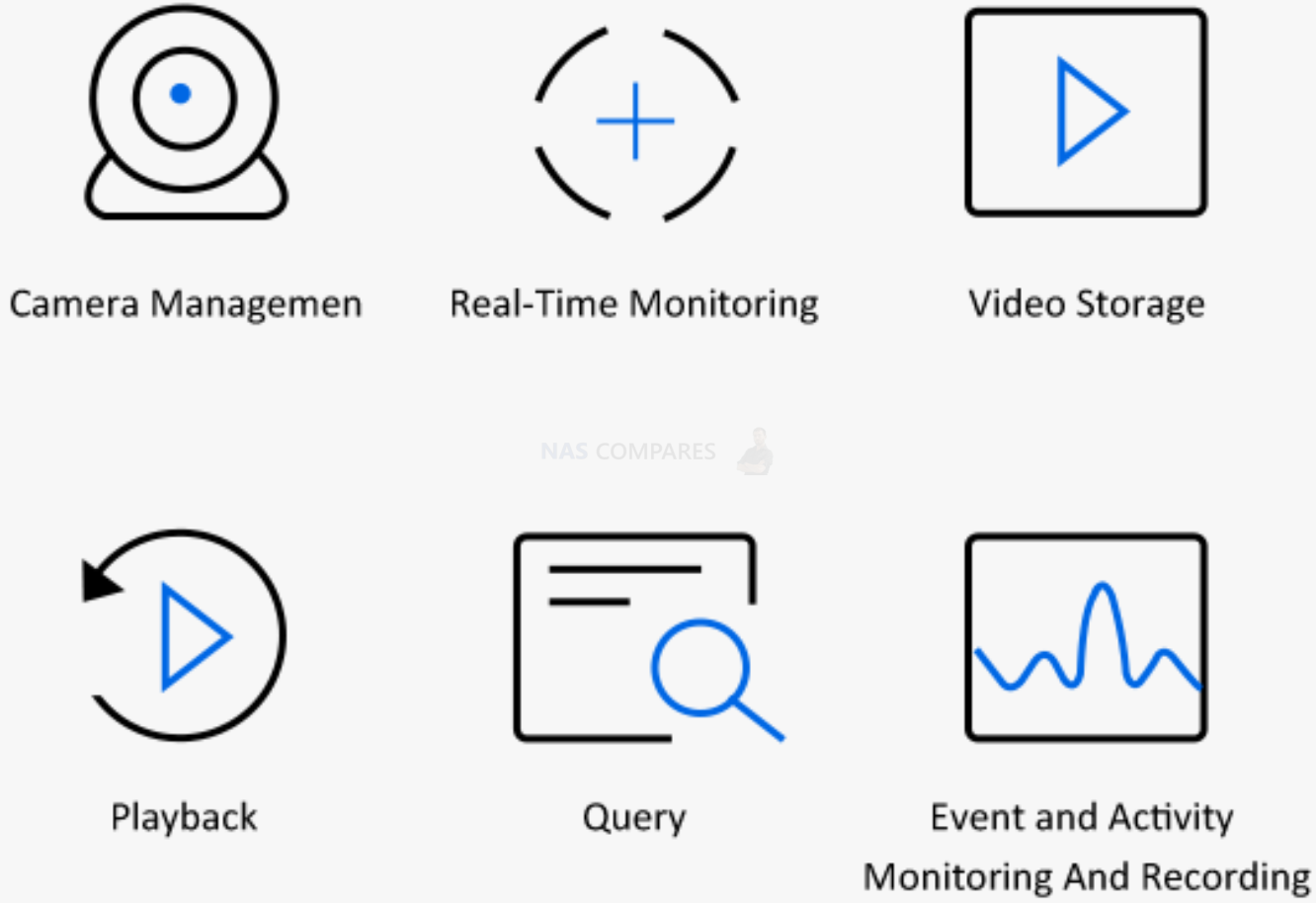
AI Photo Recognition Now Available in TOS 5 with Terra Photo
Terra Photos is TerraMaster’s brand-new AI photo management application that provides smart solutions for your photo management and sharing; it uses intelligent AI algorithms to identify and classify faces, pets, locations, and other objects in your photos.

Docker Added to Existing Container Tools in TOS 5
Combined with docker-compose and portainer, the new Docker Manager features an optimized operation interface, with multiple new features which provide visual management that meets all your requirements for container customization and flexible configuration.
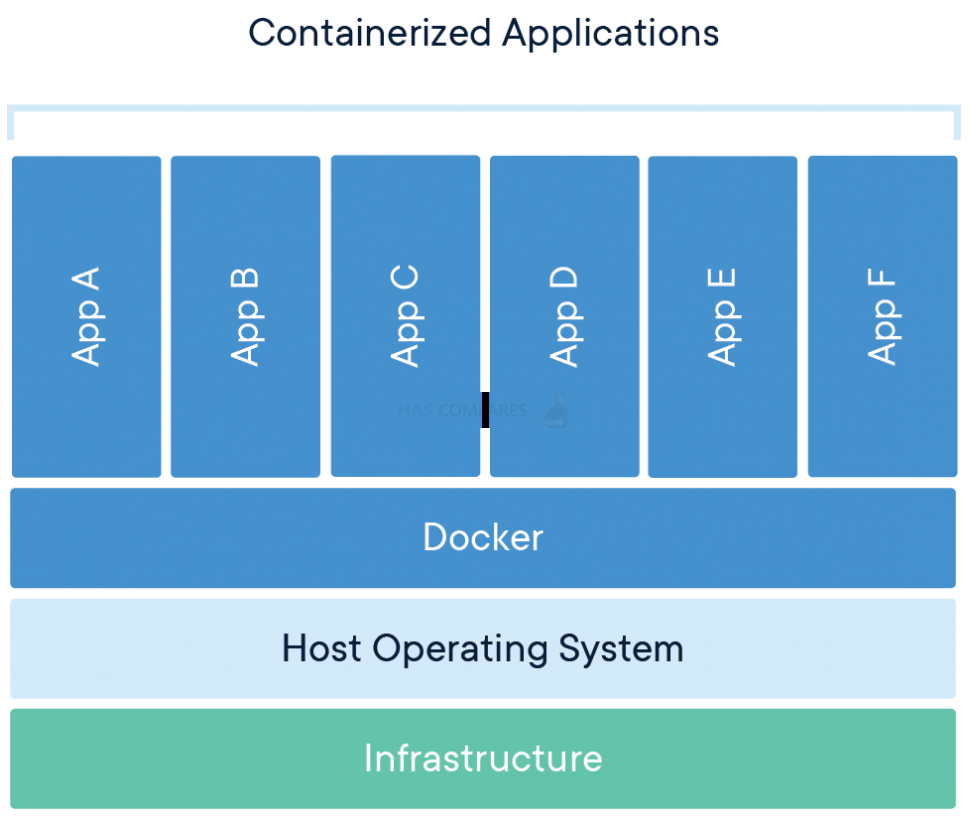
New Update to Terramaster’s Mobile App, TNAS Mobile 5
To adapt to TOS 5, TNAS mobile has also ushered in a comprehensive update, TNAS mobile 5. Featuring an optimized user interface and interaction, it has also added mobile phone backup, photo management, personal folders, team folders, data safebox, TerraSync, remote administrator, and other functions, which provide more convenience for remote access, mobile office, and remote management of your TNAS.
TOS 4 on the Terramaster F4-422 NAS
Once again, I need to highlight that the F4-423 NAS needs to be viewed with its price tag always in mind. With software and hardware that is available on other NAS brand devices, it is easy to imagine that this device is a much, more affordable alternative to QNAP or Synology NAS. However, you should always remember that this device is still aimed at those looking for a first dip into NAS and if should be compared with WD NAS and D-Link when making your choice of NAS. it is DEFINITELY better than those and arrives at a better price, but it may still be a year or more before the Terramaster TOS Software platform can compete with DSM and QTS. That said, the Beta is really showing that TOS is going to evolve even further and for more information about the TerraMaster TOS operating System, I recommend visiting my software review here from a couple of years ago.
Key Software and NAS tasks that are supported are:
- RAID 0, 1, 5, 6, 10, JBOD
- Apple Time Machine Backup
- Cloud Migration and Synchronization
- NAS to NAS Rsync Support
- Plex Media Server
- Docker
- Mail Server
- Web Server
- DLNA Media Server
- WordPress Server
- Download Server
- Snapshot Support
With a good range of applications to choose from, as well as the support of modern NAS applications in the mix, the TerraMaster F4-423 does give you a good base with which to start your NAS journey, though it may feel a little streamlined for those with greater NAS experience.
Terramaster F4-423 NAS Review – Conclusion
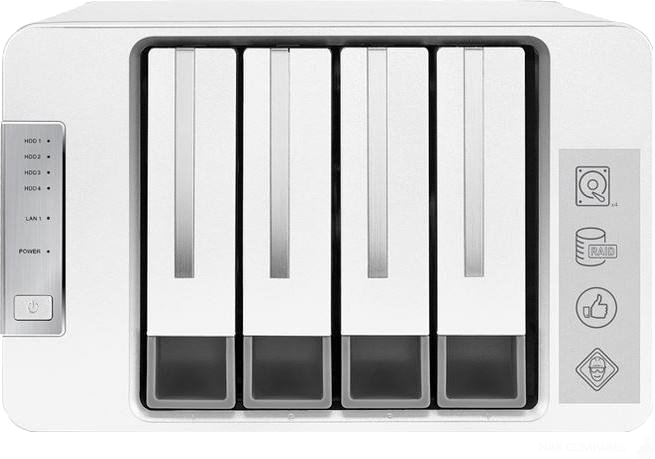
Terramaster still continues to be the most affordable fully-featured provider of the whole NAS market and although a number of their solutions have always felt a little rough around the edges, you always got the impression that you were getting a good deal for the hardware that was available from QNAP and Synology. Now in 2022/2023, the same continues to be true but in the F4-423 NAS’ case, you are actually getting some pretty top tier (for the Home/Prosumer) market at a price tag that is really tough to argue with. Terramaster has clearly been watching their bigger competitors and cherry-picked the features that people have been asking for (2.5GbE, USB 3.2 Gen 2, M.2 NVMe SSD bays, etc) for this new generation. In terms of software, things are a little less convincing and although TOS 5 (currently in Beta at the time of writing) still continues to evolve into something genuinely fully featured and impressive, TOS 4 that the F4-423 includes at launch is usable (if unexciting) platform that provides the base level services that a new NAS user would want, but lacks killer apps that their competitors are offering right now (File Streaming, AI photo recognition, Surveillance, etc). Most of these ARE included in TOS5, but until it arrives much later in 2022 in a full release, the F4-423 feels like a powerful NAS that doesn’t have the software to show off its strengths yet. If you are reading this later in 2022 or 2023, this might well be irrelevant though, as the brand rolls out their bit firmware update to ALL Terramster NAS devices. Overall, I definitely CAN recommend the F4-423 NAS for its hardware, for Plex Media server or as an affordable multi-tier backup solution, but if you are looking for a NAS for more tailored data access or in a much more fully-featured package – hold out a little longer till TOS 5 gets released first.
| PROS of the Terramaster F4-422 | CONS of the Terramaster F4-422 |
|
|
Click the link below to take you to your local Amazon store and where to buy the terramaster F4-422 NAS.
New Gl.iNet Beryl 7, Comet 5G SIM KVM and Flint 3e Value Router Revealed
NEW UGREEN DXP4800 PRO and DXP4800S NAS REVEALED
NanoKVM Pro Review - SO, SO CLOSE TO PERFECT...
Jonsbo N6 DIY NAS Case - NINE BAYS????
New UnifyDrive UP6 INSANE NAS + UC450 Pro and UC250 NAS Revealed
I VISITED A MINI PC FACTORY - Inside Beelink HQ
Access content via Patreon or KO-FI
Discover more from NAS Compares
Subscribe to get the latest posts sent to your email.


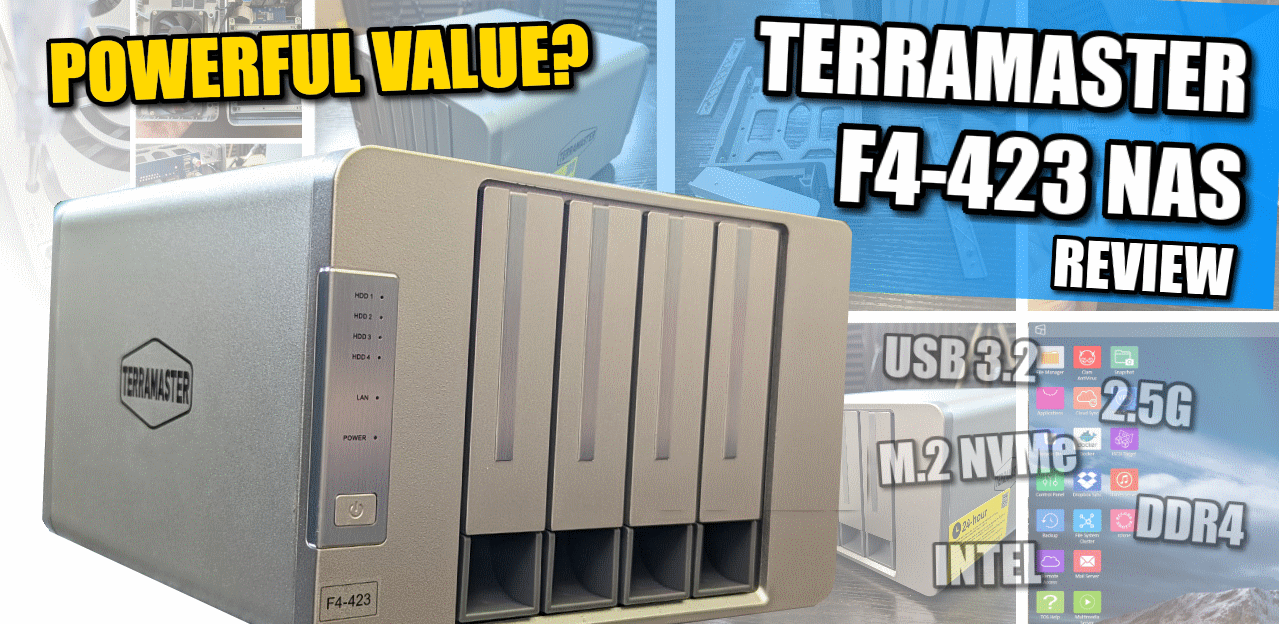
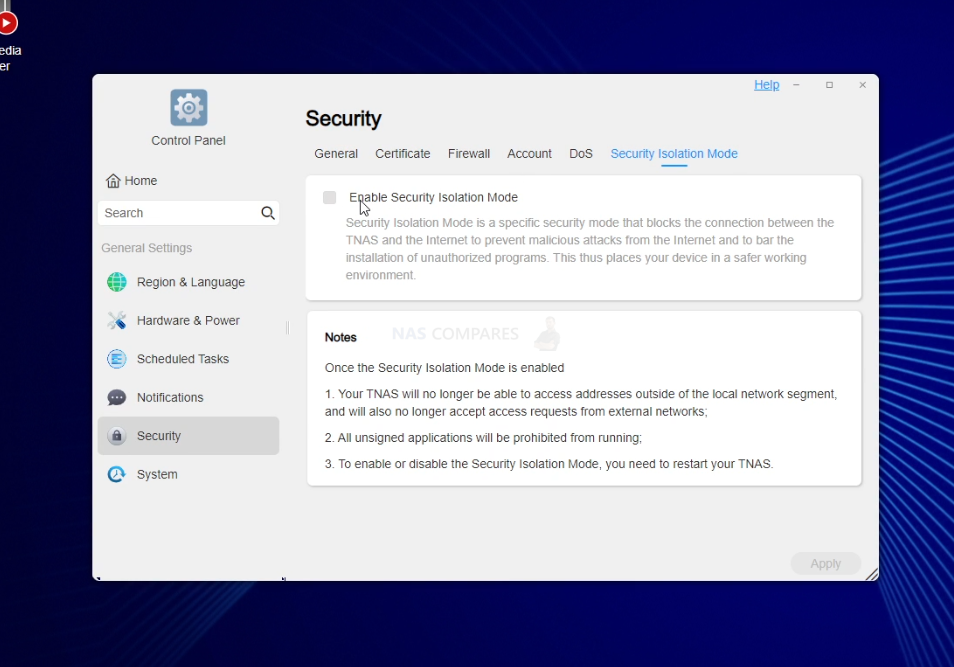



Look like a have a major problem I lost access to my nas , F2-210 2 drives I can not get into my system(TOS), I had the systems for a few years(3), I tried to shutdown system nothings happens, followed the steps from TM support web site no go. Now TNAS PC does work. I need a lot of HELP?
REPLY ON YOUTUBE
Prices have apparently come down on these quite a bit. I just ordered one (it arrives tomorrow) from Newegg for only $369.00.
REPLY ON YOUTUBE
You’re full of shit. That cardboard box is dope.
REPLY ON YOUTUBE
i just bought me terramaster and was wonding is ok to run it off a switch? i have my house set up from router to the switch to walls thruout the house
REPLY ON YOUTUBE
Thank you for unpacking and the work you do.
I would very much like to see your video in the F4-423 vs F4-223 comparison format. Why does TerraMaster separate them and make different prices for them??
Not necessarily full-scale, but something in the format of 15-20 minutes would be great.
Thank you in advance.
REPLY ON YOUTUBE
Thanks for again a really great review! It made decide to buy one and this is a great piece of hardware. Not the top notch but good for my usage. I’ve setup Xpenology with 4 4TB MX500 SSD’s and it works great! After activating C states in bios I’m idling at 10 watt with 2 2.5gbe connections and a few basic iscsi and smb shares.
I also put 2 WD blue M.2 2tb as separate volume but the power consumption at idle climbed to 15 watt. As I dont need so fast storage I took these back out. It is quiet and with 24°c room temperature the SSD’s stay around 27-28°c.
I have 1 negztive point to mention. I tested the speed of each SSD’s via the integrated benchmark tool of DSM and the 2 first disks give expected speed of 500+ mb/s, but disk 3 and 4 are only reaching 350mb/s. I have no clue why.
REPLY ON YOUTUBE
Hi Rob, Am I able to add a Terramaster Das to the usb port as extra storage to the main pool?
REPLY ON YOUTUBE
I dont know why you bang on so much about 2.5 Gbe, when most ISP,s dont oher that speed. I might be missing something?
REPLY ON YOUTUBE
any update on the TOS support to applications?… I hear its not great… Thinking about the TrueNAS Scale that you did a review on… I’m still waffling between TOS and Scale..
REPLY ON YOUTUBE
Can you explain an original TRAID mode of F4-423?
REPLY ON YOUTUBE
I finally got this excellent baby after following your reviews for over a year. However I am still stumped on how to set up a Virtual Switch to allow a direct Cat 6 connection between the NAS and my PC which has a 2.5 Gbe. I believe Qnap has this function.
REPLY ON YOUTUBE
Just come across your channel as my HDDs pretty much failed in my Netgear RN312 (which has served me well to be fair) – so thought, why not look to upgrade it all! Like your presentation and the detail – you’ve just taken about 8 hours of my life and I only found you about 3 days ago (but that’s good ????). My question to you if you’d accept it – I’ve watched you review of this and the Lockerstor 4 Gen 2 – I’m going to have RAID 5 most likely across 4x8TB Ironwolf Pro drives (the new NT version) – which one would you choose if the cash is not the factor (I liked the TS-453D and TS-464 as well but don’t think they are the ones). Mostly about file protection and eventually YouTube video creation and photography with Lightroom. Appreciate your content.
REPLY ON YOUTUBE
Put a sticker with the purchase date on the hdd, then x many years down the line, you know when the warranty runs out and time to get a new one.
I would rather they save on the brown box and not save on putting cheap hardware in.
I like the look it’s more unique than the others but would look funny in my rack lol.
REPLY ON YOUTUBE
Excellent video, as always.
I might be missing something but those two 2.5 Gbps ports, aren’t they a downgrade compared to the 10 Gbps of the 422?
REPLY ON YOUTUBE
Just a warning for anyone looking to purchase this NAS. According to the terra-master forum, terra-master has disabled support for ALL third party RAM for this model after the TOS 5 update. They are only allowing their “officially supported” RAM modules that just so happen to cost 4-5 times the price of equivalent third party RAM. I just found this out after purchasing the NAS and think I will have to return it. Third party RAM is usable if you install another OS like TrueNas so they are disabling support in their software.
REPLY ON YOUTUBE
Does this boot from the USB drive, so you can install whatever OS you want on it?
REPLY ON YOUTUBE
Anyone installed the app on mobile phone for this device.?
I’m trying to do this after following the full guidelines on setup , and for over 24 hrs I’m trying to add to my phone and see the Nas, but can’t login.
On my Pc and sharing on my network is ok, i can see and connect, but once I’m open my app on phone, i can’t login.
I’m using my user name and password,but on last option said,, PLEASE INPUT TNAS ADDRESS “. That’s the problem i just can’t understand,what do i need to add there.
Any help or advice will be really appreciated.
Thank you
REPLY ON YOUTUBE
Can I have a private cloud on this one?
REPLY ON YOUTUBE
Dull packaging? Good! I don’t need to be entertained by the box my gear comes in. Entertainment comes after it’s installed. Packaging needs to tell me what’s inside if it’s a spare sitting on the shelf waiting to be used, and protect the stuff inside. That’s it.
REPLY ON YOUTUBE
Why dont review Firewall pls?
REPLY ON YOUTUBE
Any chance of a link to the 4-bay?
REPLY ON YOUTUBE
the value proposition to me from terramaster, is low cost basic option for NAS. As someone else mentioned who bother’s with the vendor provided apps.
REPLY ON YOUTUBE
Thanks for the review! Looks like TOS 5 became official June 13th. I currently have an F2-422.
REPLY ON YOUTUBE
Good ole classic nascompares review thanks
REPLY ON YOUTUBE
Great to see. The more competent competition the better. Keep Qnap and Synology on their toes 🙂
Not that this is a “Synology Killer” I certainly hope it wakes them up!
If Synology doesn’t have competitive x22/x23 models before the end of the year they are going to have a notable gap in both their new and returning customer base.
REPLY ON YOUTUBE
Love how terramaster says go to TOS > Control Panel > General settings > Software update MY NAS IS DEADBOLT LOCKED no way to update it
REPLY ON YOUTUBE
Can you PLEASE mount your mic off the desk. Every time you move it sounds like someone hitting a bass drum and adds so much unnecessary noise to your audio.
REPLY ON YOUTUBE
Thumbnail says F4-422, but it’s about F4-423?
REPLY ON YOUTUBE
Nice review, as always! I really wish the microphone was not mechanically coupled to the desk. Every time something is moved on the desk, a nasty rumbling noise distracts me from what you’re actually saying. Never mind if I’m just overly sensitive with the musician/sound engineer part in me and the fact that I’m listening through decent headphones. In either case, thank you for the great job.
REPLY ON YOUTUBE
Sorry, but that silver just looks tacky. This is not 1998!
REPLY ON YOUTUBE
I suspect that one thing that keeps their costs down and upgrade timeline moving faster is that they don’t have the relatively huge array of apps to update like Synology and QNAP. I have a NAS made by all three of these companies and Terramaster’s app selection is far smaller. But it does have a few really good ones like cloud sync for Google Drive and Onedrive. They are also far simpler and therefore easier to use although there are a few places where you need to guess what to do next when using them. But, overall, for people with more basic needs, the Terramaster will be great and far less painful to setup.
REPLY ON YOUTUBE
Was waiting for this review. Looking forward to the software review. Need to max this puppy out and run comparisons.
REPLY ON YOUTUBE
Is there a good or better Synology equivalent of download station on this one ?
REPLY ON YOUTUBE
Is there the equivalent of Synology download station on this one ?
Thanks for the vid
REPLY ON YOUTUBE
I wonder if this NAS can backup cell phone and laptop ???? ????
REPLY ON YOUTUBE
Hello, can TOS 5.0 display videos directly to TV/monitor via hdmi now for f4-421 model? Thanks.
REPLY ON YOUTUBE
Is there a way for you to check if this allows you to display the new OS through the built in HDMI port that is available on some units like the F4-421? I have watched your earlier videos and I remember you saying that they were hinting at adding that ability sometime down the road. Thanks for the videos, I appreciate them!
REPLY ON YOUTUBE
What do you think of AMBER X Smart Personal Cloud Storage.?
REPLY ON YOUTUBE
Much better that the Qnap OS that is for sure and if Synology don’t pay attention a continues to lunch proprietary crap many this one will start taking some share, well done Terramaster.
REPLY ON YOUTUBE
TOS (same as “TermsOfService”), what a weird name for a OS. I hope you won’t break that TOS by watching movies with your NAS lol
REPLY ON YOUTUBE
Important News for Terramaster NAS users, There are reports of TNAS devices being targetted by Ransomware, learn more here – https://nascompares.com/2022/01/18/terramaster-nas-drives-being-attacked-by-ransomware/
REPLY ON YOUTUBE
Does anyone know if you can mount a drive like google drive via rclone. Thanks
REPLY ON YOUTUBE
THESE TERRAMASTERS HAVE HORRIBLE SOFTWARE. I BOUGHT A F4-210 4 BAY AND IT CONSTANTLY DISCONNECTS FROM MY NETWORK. I GOOGLED IT AND ITS A PRETTY COMMON PROBLEM. WHEN I WENT THRU THE FORUMS POST ON THIS ISSUE TERRAMASTERS ANSWER WAS ALWAYS REINSTALL TOS BUT THIS ONLY FIXES ISSUE FOR SOME PEOPLE. I HAVE REINSTALLED TOS 3 TIMES NOW AND IT STILL RANDOMLY DISCONNECTS FROM MY NETWORK LEAVING MY EMBY SERVER UNABLE TO SHOW MOVIES AND TV SHOWS I HAVE ON THE DRIVE.
REPLY ON YOUTUBE